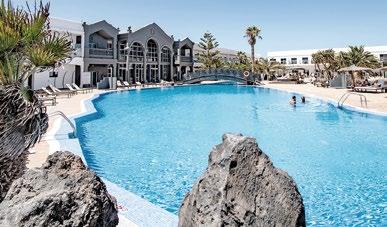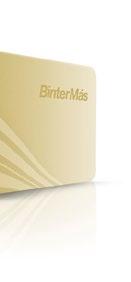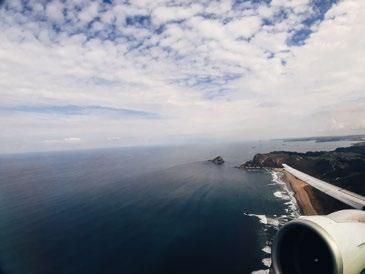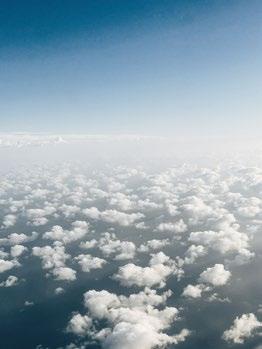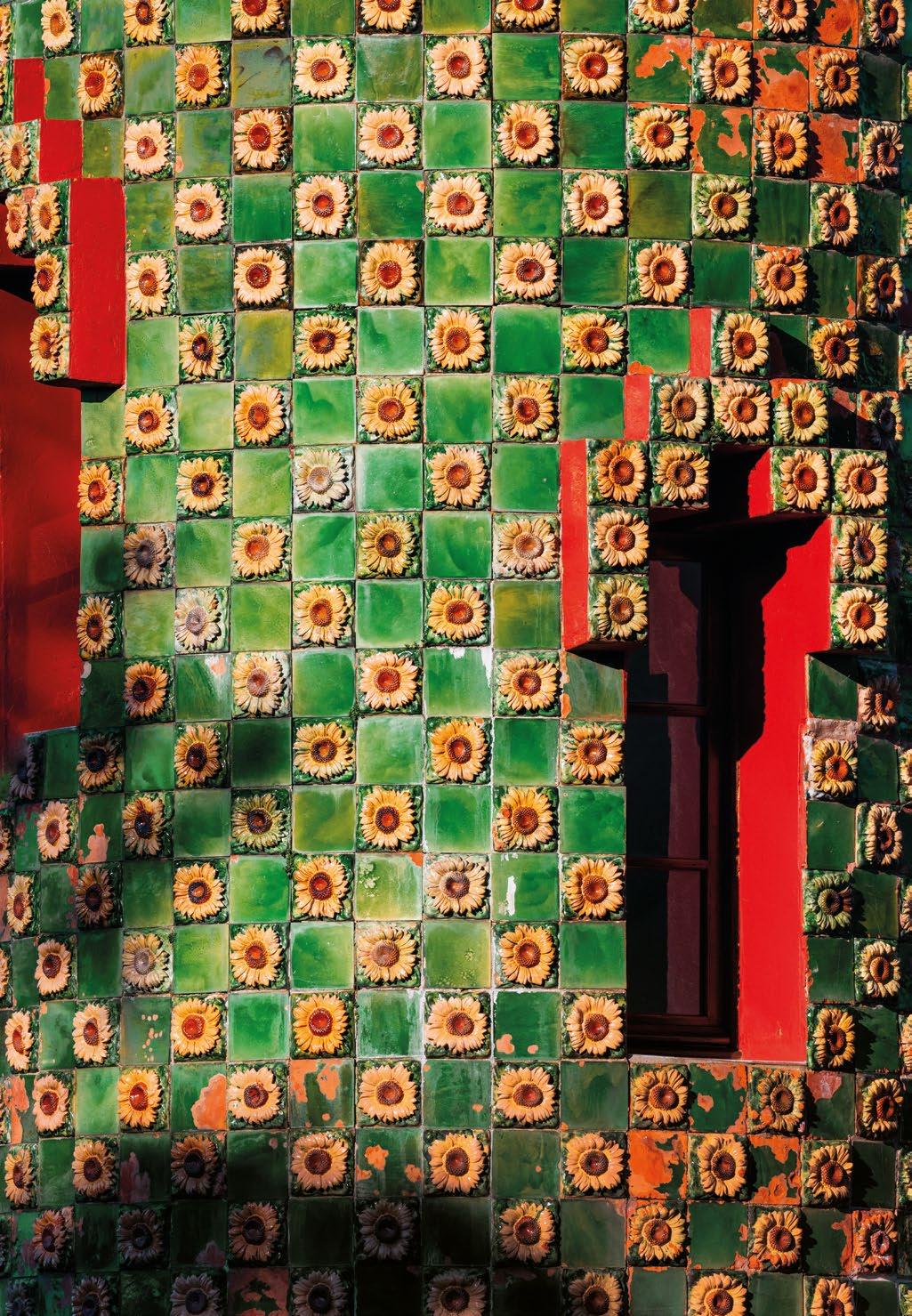

STAFF
CONTENT COORDINATOR
Beneharo Mesa · redaccion@barabaracomunicacion.com
TRANSLATION
Karl McLaughlin
EDITING Lavadora de textos
CONTRIBUTORS TO THIS ISSUE
Beneharo Mesa, Enrique Areilza, Elena Ortega, Saioa Arellano, A. Hernández, Aarón Rodríguez González, Raquel Álvarez, Cristina Torres Luzón, Francisco Belín.
CREATIVE DIRECTION AND LAYOUT
great · greatttt.com · estudio@greatttt.com
COVER PHOTO
Adobe Stock
PHOTOGRAPHS
Elena Ortega, Asier Calderón, Saioa Arellano, Rocío Eslava, José Chiyah Álvarez, Adobe Stock, Pixabay.
ILLUSTRATIONS
Capi Cabrera, Ilustre Mario.
ADVERTISING publicidad@barabaracomunicacion.com · 922 897 517
BINTER
Rodolfo Núñez – President Alfredo Morales – Vicepresident Noelia Curbelo – Institutional Relations and Communication
FOLLOW US ON OUR WEBSITE AND ON SOCIAL MEDIA www.bintercanarias.com · Facebook · Twitter · Instagram · www.revistabinter.com
NT is produced exclusively by BARA-BARA 3.0 S. L. for BINTER. Write to us at buzon@barabaracomunicacion.com.
Neither BINTER or BARA-BARA 3.0 S. L. are responsible for the content of advertising or the opinions expressed by contributors in their articles. All rights reserved. No part of this publication may be reproduced, edited or transmitted by any means or in any form without the express written approval of BARA-BARA 3.0 S. L.
PRINTED BY Gráficas Sabater S. L.
With technical assistance from 2informática
Legal Deposit TF 582-2019
NT magazine has used paper obtained from certified sustainably managed forests.
PRODUCED IN THE CANARY ISLANDS


WITH VERY BEST WISHES
We are nearing the end of 2022, a year that commenced with the last vestiges of COVID and the recently-extinguished Tajogaite volcano and then, despite the start of the Ukraine war, brought an upturn in fortunes in the following months and will hopefully end on a good note in terms of demand.
The year overall has been a good one for the aviation sector demand-wise, although this has been offset somewhat by the rise in operational costs due to increased energy prices, the fall in value of the euro against the dollar, rising maintenance costs and, in general, the effects of inflation. All this has led us to redouble our efforts to improve our productivity to absorb these impacts as far as possible. And that is what we are continuing to do.
This year has been important also in terms of our presence in external markets: we reopened routes closed because of the pandemic, we consolidated our destinations in mainland Spain, and we launched direct flights to five new destinations –Menorca, Valladolid, Florence, Fez and Ponta Delgada.
We continue to work to make the Canaries a hub for air traffic to and from Africa and, with that in mind, have adjusted some of our schedules to facilitate connections with domestic and European flights, as well as flights to our neighbouring continent.
Moreover, this year we have launched a new product aimed at those visiting the Canaries. Binter’s new stopover initiative, called Discover, is designed to increase air traffic to all the Canary Islands by allowing passengers to fly to two islands on the same trip for a small additional charge.
Binter is very mindful that its primary mission is to connect the Canary Islands, which is why this year we have created two new bases in Lanzarote and Tenerife South to improve schedules on existing routes, increase flight frequencies and open new interisland routes, such as Tenerife South to La Palma and Lanzarote.
2022 has also been a year of landmarks that we would like to share with you.
In July, Binter marked its 20th birthday as a Canarian firm; 20 years in which it has grown to become what it is today: the leading airline in the Canaries. A group comprising
fifteen companies that, under the collective umbrella of the Binter brand, cover the entire chain of value in air transport, from sales and customer service to aircraft maintenance and aircraft component manufacture and design. From flight operations to airport activities, as well as administrative services, direct passenger care, the production and design of technology solutions, and staff training and development. A company that all canaries can be proud of.
No birthday is complete without a birthday present and this year you have given us two: on 17 April 2022 we beat our record of passengers carried on a single day and in July we welcomed on board our 75 millionth passenger, at Fuerteventura Airport.
Our commitment to sustainability continues in the form of modern and more efficient aircraft and ground support equipment, agreements to collaborate in the development of cleaner fuels, and the decision to replace single-use plastics with compostable materials that help us reduce our carbon footprint without reducing the quality of our inflight service.
We also remain committed to helping society by supporting for actions that help those most in need, one example being our collaboration with the Rotary Club of Puerto de la Cruz and the Canaries with Chernobyl Association to organise a special flight to fly 122 Ukrainian refugees from Krakow to the Canaries.
2022 is drawing to end but it will lead to a new year which will bring new things and challenges; a year in which the more than 1700 persons who make up Binter will continue to work as always to provide the best possible service, with more flights, more seats, new destinations, better schedules, better planes and increased punctuality and regularity.
We look forward to facing new years and new projects together with you and to accompanying you as you fly to meet up with your loved ones this Christmas.
A very Merry Christmas from all of us here at Binter!
Núñez President, Binter







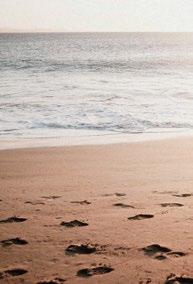

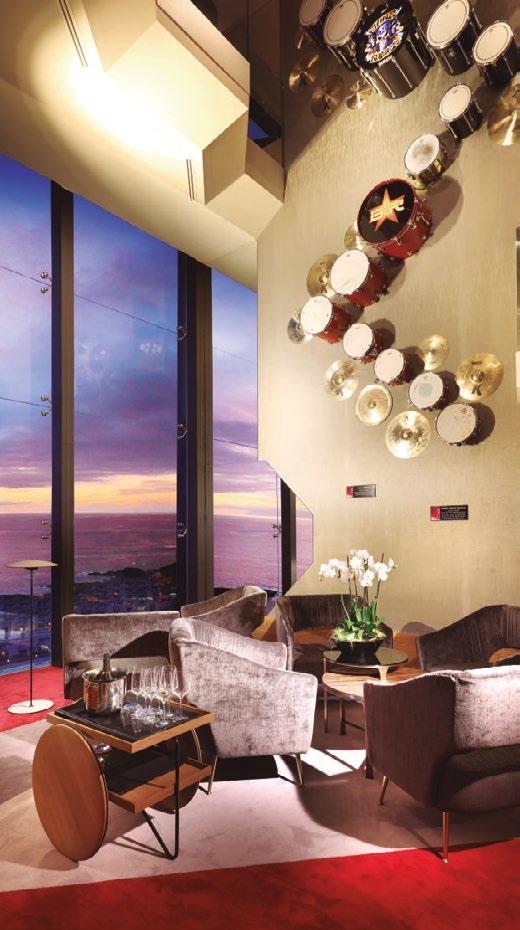

«I GO ON STAGE AND REALLY ENJOY MYSELF, ESPECIALLY BECAUSE OF THE AUDIENCE FEEDBACK »
Lili Quintana (Teror, 1969) began her training with acting, dancing and singing courses and workshops in Gran Canaria’s Cultural Centre. She is currently one of the best-known actresses in the Canaries. Many will know her as the iconic TV character Chona but she has been part of more than thirty different theatre productions of all kinds, both on stage and in front of the cameras.
How did you get into acting?
I started at primary school and it all came about because my brother signed me up for a drama group organised by his music teacher. The teacher’s theatre-mad husband took part in these out-of-school classes and set up a group called Tatagua. I was really passionate about joining. Although I was probably only about eleven at the time, I already knew then that I wanted to be an actress.
You have worked in around thirty theatre productions, films and TV series. Which do you feel most comfortable in?
They are all very different. I always say theatre because it lets me be more
creative with my character and because of everything that goes on around it, from both the technical and staging perspectives. You create a world starting from zero and up to what we set out to convey as actors. On the contrary, TV is really fast. You need to learn and get into your character in a matter of minutes. Only then do you see if it works or not. It did work with Chona and we created an absolute legend.
There is no avoiding asking you about Chona. How do you feel about the character? A bit fed up with her?
It’s hard to sum up fifteen years spent being a character. I can’t get away from her because she is much loved. Not that I want to: she is what people want to see,
so that’s what they have to get, even if I admit that I am a bit tired or whatever …. I put this down to the scripts, having to learn so much in so little time. It is not because I have tired of the character. I go on stage and I really enjoy myself, especially because of the audience feedback when you say something and they fall about laughing. Audience and actor become one and I have a great time. It is hard work, however, and it takes a lot out of me. But I suppose it is like any other job: monotony takes its toll in all facets of our lives. I am fortunate enough to play Chona but I am involved in loads of other projects also. That’s why I have never felt pigeon-holed with this character. I do, however, see myself as having one foot out of the door of TV because, for whatever reason, we are always being called into question or new bosses turn up and announce that they are « going to review this ». Yet we get the viewing figures!
-
-
At the end of the day, the most important thing is what audiences want, isn’t it?
True, and this character has brought me loads of joy. During the pandemic, for example. But it has also caused me health problems and I don’t mind saying so. I have suffered asthma for the last nine years and it all really takes a lot out of me. My colleagues would say the same. It sounds like a contradiction: we try to make people laugh yet there is a price to pay. I can’t speak for others but no other actor in the world does what we
do every week on En otra clave. I am certain of that. I am an actress and am always keen to highlight the work of actors because we often get treated badly. We are criticised for being puppets and, to tell the truth, I have been going through a stand-up-for-ourselves phase recently.
Thanks to social media, your character has become very famous in Latin America. How has that experience been for you?
It was amazing seeing people like India Martínez and Thalía imitating Chona. Many people were playing audio clips of Chona and imitating her, and I was absolutely astounded by it. What’s more, it happened during the pandemic, a time when we were getting suitcases sent to our homes with the clothes needed to play our characters. That itself was a learning process that has served me well: learning how to make a quality product on only your mobile phone for the home edition of En otra clave. I think people needed something to distract them back then. For me there was also an element of justice, bearing in mind what I said earlier about the price we pay for being actors, for entertaining and providing emotional support for many who were having a really bad time. That is my take-away from all this.
What are you upcoming plans?
I am currently performing in Madre (Mother Courage), a play by the La República theatre company. It is based on the original Bertolt Brecht work and our aim in doing it is to highlight the daily plight that the people of the Sahara have endured for years. Apart from that, I am still doing Chona in En otra clave, needless to say.
Lee la entrevista completa en revistabinter.com
« No other actor in the world does what we do every week on ‘En otra clave’ »


 By Enrique Areilza* Illustrated by Ilustre Mario
By Enrique Areilza* Illustrated by Ilustre Mario
TRAINERA BOAT RACES: A ‘MASTERCLASS’ IN LEADERSHIP
If you have not seen it already, you really should watch ‘trainera’ boat racing for the many lessons it can offer you. How to build, maintain, motivate, encourage and above all coordinate a team of thirteen rowers and their cox to achieve success.
We Basques love to show off and boast. Indeed, if you are from Bilbao, you probably have a Master’s degree in it even if you do not live in the city centre. It may be why one of the various theories surrounding the origins of these boat races links them to Basque fishermen hunting whales in Newfoundland. We know for a fact that they did hunt whales and that a rowing boat would be launched from the ship to get closer to the whale and fire the harpoon. What is less clear is whether the actual origin of the current races lies in several boats competing against each other to reach the whale first.
Others have put forward different explanations for the origins and, in my humble opinion, these are more accurate as they link the sport to how pilot boats operated in ports. On sighting a ship, the
pilots would rush out to be first to reach it for the privilege and financial reward of guiding it into harbour. These «races» appear to mark the birth of trainera racing.
I like to mention the origins due to their epic nature. However, let me move on to the Dream Team of traineras and begin with a few technical comments to facilitate understanding. A trainera boat is crewed by twelve plus one rowers. This is nothing to do with superstition, it is the actual truth: the rower seated at the bow has an additional and crucial role, namely, supporting the turnaround when the boat reaches the buoy and then has to race back in the opposite direction.
The turning manoeuvre at the marker buoy is called ‘ciaboga’ in Spanish and is a combination of the words ‘ciar’ and
‘bogar’ (forwards and backwards). Put briefly, one side of the boat rows forward and the other rows in reverse to generate a dual force that makes the boat turn. The turn is crucial as you are rewarded or penalised depending on whether it is performed brilliantly or badly. In addition to the key coordination required between the twelve rowers (six on each side), a critical role is played by rower number thirteen at the bows. Called the ‘proel’, this rower is like an extra cox who sits alone at the bow and ensures the turn is performed as quickly as possible, with very little loss of speed and ensuring also that the crew do not end up in the water.
-
The turn is crucial as you are rewarded or penalised depending on whether it is performed brilliantly or badly.
-
Once the turn at the buoy has been completed, the ‘proel’ resumes rowing just like the others. The other key figure in the boat is the cox (‘patrón’ in Spanish), who is positioned at the back, as in other forms of boat racing. Coordination between the cox and proel is just as crucial as it is between the thirteen rowers.
When not performing the turn, the aim is to row in lane as fast and as straight as possible. Oarsmen have to row in a synchronised manner in terms of strength and movement. If one side of the boat uses more force than the other, the boat will turn or veer off course. An abrupt turn of this kind is called a ‘guiñada’ in Spanish.
Here is where he can learn our first lesson in high performance: coordination and synchronisation. Not just of rhythm but power also. Lesson one leads on to lesson two: pairings. Each rower
needs someone of their same characteristics alongside them.
There are lessons for leadership also, essentially from the standpoint of the role of the cox:
_ Coordination through shouting to set the metronomic rate of the oar strokes.
_ Motivation and encouragement, alerting the crew to the advancing opposition and urging more effort by the team, a full effort.
_ Keeping the effort going: it is everyone’s effort and if one of the oarsmen falls short, the boat will veer.
_ Steering and containment: controlling and correcting the direction of travel, avoiding veering off course.
_ Order and discipline: if someone fails to turn up on the day, we will not be able to compete.
_ Preparation: tough training in harsh winter conditions and rough seas. Pushing the crew to the limit without them giving up.
_ Pride at belonging: each and every one of the crew shares in the effort and the success. I am convinced they do this with an even higher level of competition and pride than the fragile Oxford and Cambridge rowing crews.
To see an awesome dream team of female rowers, check out «Regata de la Concha chicas 2017» on YouTube.
Now you know: if you are traveling out and back, you have the ‘ciaboga’ turn at halfway.
Have a great trip.

ALDI LANDS IN THE CANARY ISLANDS
ALDI has arrived in the Canary Islands this year with the opening of 9 stores in Tenerife, Fuerteventura and Gran Canaria, in addition to a logistics platform located in Agüimes.

ALDI supermarkets offer island families a discount-based shopping option that allows customers to fill their shopping baskets conveniently, simply, with quality products and at the lowest possible price.
ALDI’s offer pays special attention to local producers with more than 360 products of Canary Island origin, which represents 20% of the assortment. In addition, it has generated more than 220 jobs by 2022, a figure that will increase to 400 in the next 3 years.

HIGH DEFINITION LIPOSCULPTURE UNIT AT CLÍNICA SALUD ESTÉTICA


Yale University-educated Dr Ahmad Saad, one of the world’s leading specialists in the technique, will travel to Tenerife to carry out 3D liposculpture operations.
This revolutionary technique sculpts the bodies of men and women with incredible precision, creating a fully toned and defined physique.

The specialist will be in Tenerife in February 2023 and will be based at the clinic of Dr Antonio García, where preliminary assessments for the operations are currently being carried out.
La Marina, 23 Santa Cruz de Tenerife T. 922 245 297 consultas@saludestetica.com www.saludestetica.com
LYCÉE FRANÇAIS INTERNATIONAL IN GRAN CANARIA:
TWO CULTURES, THREE LANGUAGES
The Lycée Français International in Gran Canaria in Taliarte (Telde) offers quality education from Pre-school to Post-16 level using French as the language of instruction, although teaching is also delivered in Spanish and English.

The high level of proficiency achieved in these languages, the dual BachiBac qualification awarded (valid in Spain and France), its top-class teaching team, and experience dating back to 1974 in

Gran Canaria all attest to the quality of a school which is supported also by its extensive education community, including families. The Lycée Français International in Gran Canaria is a member of the international Mission Laïque Française network (MLFMonde), which boasts over one hundred schools in 37 countries and whose purpose is to promote and disseminate French culture.
lfigrancanaria.com



SANTA CRUZ AT CHRISTMAS
Christmas is synonymous with excitement and nostalgia, friends and family, presents and food/drink; a true feast for the senses that helps us herald in the New Year with bundles of enthusiasm.
Santa Cruz is the heart of Tenerife and the island’s focal point, where Christmas pulsates with all its strength. The packed programme of festive activities and leisure and cultural events is an invitation to visit the fourteen shopping zones in the city’s five districts, each of which offers something different to add that personal touch to your plans.
With an enviable climate, Santa Cruz de Tenerife beckons you to discover for yourself the magic of Christmas by visiting its streets: an urban shopping area with lots to offer, personalised service and our very own hallmark style.
As always, the programme put in place by Santa Cruz Council, which can be consulted on the www.fiestasdesantacruz.com website and on the city’s social media, includes dozens of free activities.
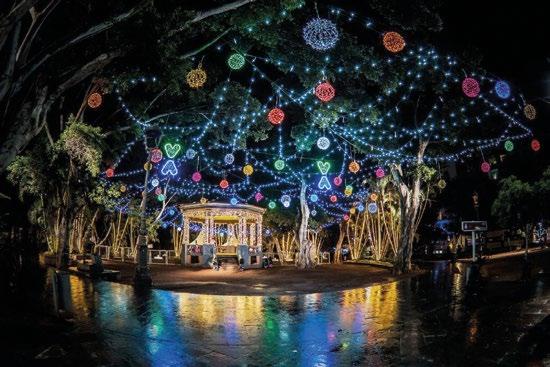
 Text by Elena Ortega Photos by Asier Calderón and Elena Ortega
Text by Elena Ortega Photos by Asier Calderón and Elena Ortega
A TRIP THROUGH CANTABRIA’S INFINITE LANDSCAPES
Climb peaks of up to 2600 metres in the Picos de Europa mountains, delve into Cantabria’s geological and mining history, and indulge yourself in the pleasures offered by locations caressed by the rugged beaches of the Bay of Biscay. Over and above its most popular attractions, Cantabria offers an amalgam of little-known landscapes that would love to be visited with moderation.
The Piedrasluengas mountain pass (Palencia) at 1350 metres above sea level gives a foretaste of the impressive forests we are about to visit. In the distance, the Picos de Europa hover on top of a layer of mist that makes them float above the Liébana region. Cantabria welcomes us with valleys and mountains that include wonders such as the Picos de Europa massif. The trip up here using the Fuente Dé cable car brings us to lovely routes that allow us to get to know Spain’s second most visited National Park.
A number of beautiful villages are dotted around the ‘lebaniego’ landscape: Potes and its walks along the river Deva; the historic buildings of Mogrovejo, chosen as the setting for the trilogy of Heidi films by Bhava Talwar; or the stunning views from Cahecho. Further east, the Peña Sagra mountains lead to the Altos del Nansa valleys and the leafy Natural Park of Saja-Besaya, where time stands still among the stone houses of Bárcena Mayor, the only populated village in the park’s interior.
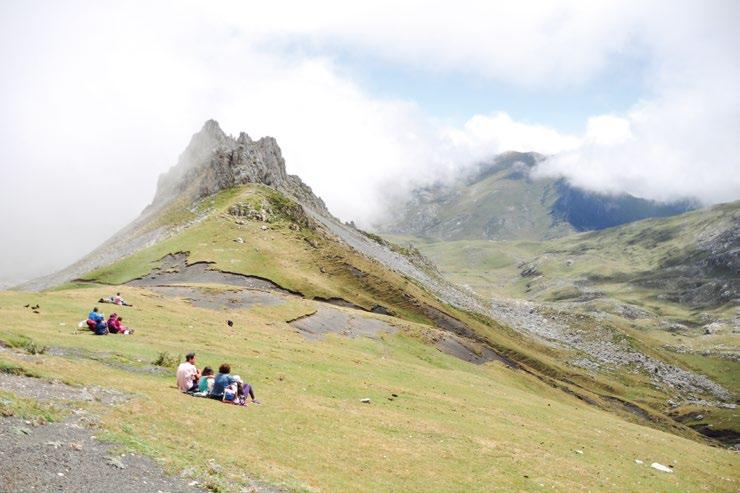

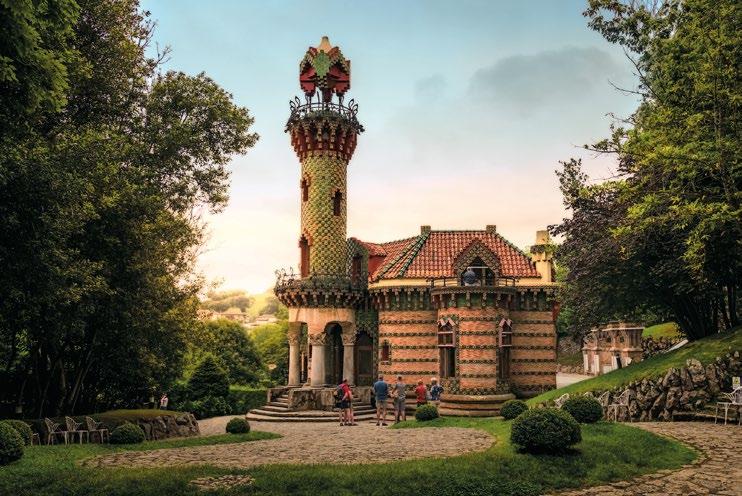

If we continue further, we are greeted by the giant sequoias of Cabezón de la Sal before reaching the coast. Two and a half hectares on which 848 trees were planted in the 1940s. The nearby Miradorio de Ruiloba vineyards display astonishing grape-growing on slopes of over 35 % with wonderful views of the mountains on one side and the sea on the other.
A stop here is worthwhile not just to admire landscapes that reflect the very essence of Cantabria, but also to get to know the history of this small winery, try its wines with slightly salty notes, and taste its selection of dishes made with locally-sourced products.
Altamira Cave boast cave drawings dating back thousands of years. To protect them, they have to be viewed in the form of accurate recreations in the museum situated next to the cave.
Cantabria boasts several beaches nestled on the stretch of coast between the towns of San Vicente de la Barquera and Comillas, which is brimming with palaces and modernist buildings. Of these, mention should be made of Gaudí’s Caprice, a summer villa that reveals the construction secrets of the famous Catalan architect and the life of its owner, returned emigrant Máximo Díaz de Quijano.
-
Before letting ourselves be swayed by the Bay of Biscay’s sea breeze, we should head underground and visit some caves -
If we want to reach the coast from Liébana, we will need to negotiate La Hermida gorge. Consisting of 22 km of bends nestled in mountains and following the route of the river Deva, it is the longest in Spain. Before setting out, however, we first pay a visit to the church of Santa María de Lebaña to admire one of the best examples of Mozarabic art and its immortal historic roof.
Before letting ourselves be swayed by the Bay of Biscay’s sea breeze, we should head underground and visit some caves. Two of Cantabria’s many caves merit special mention. To enter the El Soplao cave and its 13 km of mining history, you need to climb aboard wagons that recreate the old access to the La Florida mine. Meanwhile, the walls of the
Sixteen kilometres away lies Santillana del Mar, which is of great historic and artistic value despite not being on the actual coast (even if very close).
Once in Santander, we can take a stroll along the bay and admire its flagship building: the Magdalena Palace, built as a residence for King Alfonso XIII.
For its part Castro Urdiales, which lies almost on the border with the Basque Country, takes us back into the very heart of nature, surrounding us in the greens and blues that characterise Cantabria’s infinite landscapes.
–
SANTANDER
From 12,000 points one-way or earn up to 1,200 points one-way.
For terms and conditions, see bintermas.com Ask our cabin crew for a leaflet or register with bintermas.com and start earning on your Binter flights and with more than 30 programme partners.
–
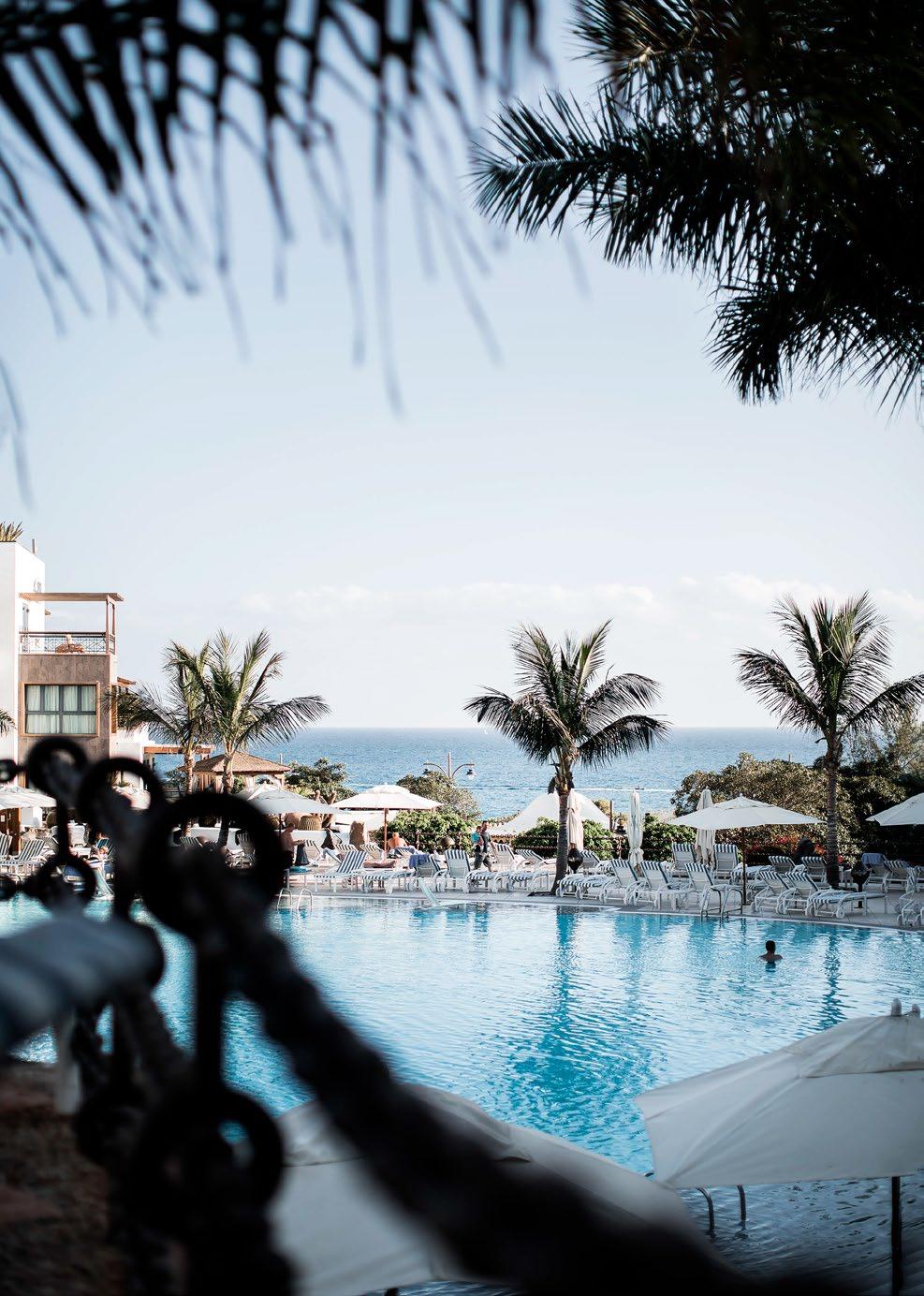
HOW TO GET THERE
Binter flies direct to Santander from the Canary Islands, with two flights per week from Tenerife (Mondays and Tuesdays) and from Gran Canaria (Thursdays and Sundays). The flights take 2 hrs 50 mins, with connections available from the other islands.
WHERE TO STAY:


Silken Río Santander 4*: ideal for discovering the distinguished and aristocratic city of Santander. The hotel’s elegant front overlooks the El Sardinero Beach and the waters of the Bay of Biscay, offering unrivalled views.
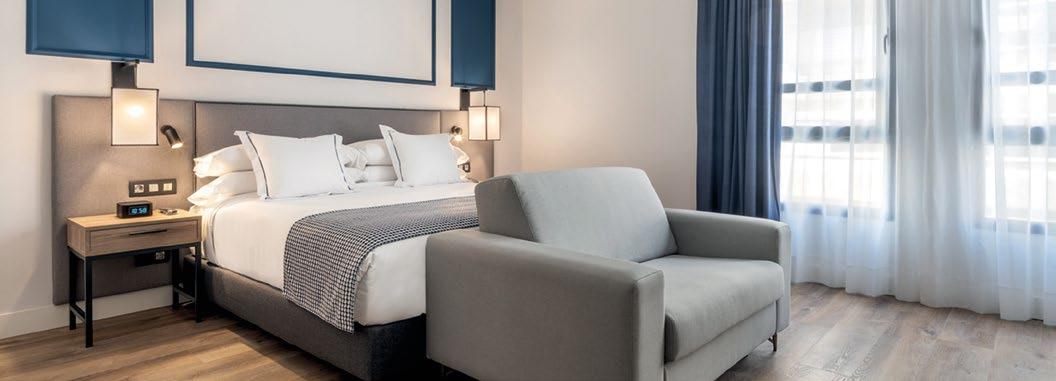

Silken Coliseum 4*: located in the very heart of Santander, from this hotel you can take pleasant walks to discover the elegant city. In the streets immediately around the hotel you will find the town hall, cathedral, Porticada Square, Esperanza Square, Museum of Contemporary and Modern Art and, towards the seafront, the Pereda boulevard and gardens.
WHAT TO EAT:
Santander tastes of deep-fried strips of squid. Razor clams. Seafood from the Bay of Biscay. Anchovies from Santoña. Quesada cheescakes, quesuco cheeses and sobao pasiego cakes. Santander is a destination to enjoy dishes that give pride of place to local produce. A walk around the capital of the region of Cantabria is enough to make you realise that you need to visit this city with an urge to discover tastes and be seduced through your taste buds.
MUST SEES:
La Magdalena Palace: Situated in the upper part of the La Magdalena peninsula, this building was designed by Gonzalo Bringas and Javier González de Riancho. Botín Centre: this recently opened space for art and creative development was designed by Renzo Piano. It has two large exhibition halls and a cafeteria-restaurant headed by 2-star Michelin chef Jesús Sánchez. Its unparalleled location offers the best views over the bay.
Menéndez Pelayo Library: the Cantabrian writer donated his entire library of books and the building in which they were housed to the city of Santander on condition that they would always be kept together.
Menéndez Pelayo Museum-House: built in 1876 and occupied since then by the family of Marcelino Menéndez Pelayo. Years after the death of the illustrious scholar, it opened to the public, with some of its furniture and effects in their original places. Together with the Library, it has been designated a site of historic and artistic interest.
More information on www.revistabinter.com and www.canariasviaja.com



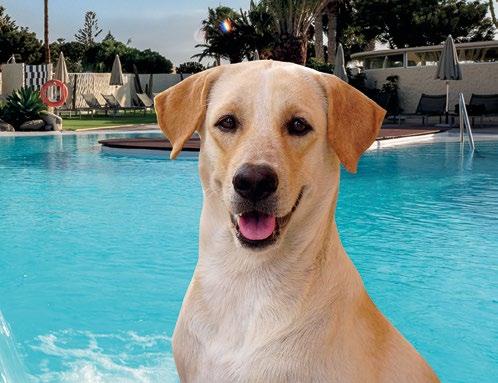



 By Saioa Arellano
By Saioa Arellano
PEÑAFIEL, CRADLE OF RIBERA DEL DUERO WINES
Just forty-five minutes from Valladolid lies Peñafiel, whose main calling card is the fact that it is the capital of the Ribera del Duero Denomination of Origin for wines. Ever since Spain’s Ministry of Agriculture, Fisheries and Food granted it the distinction thirty-nine years ago, the town has been a major draw for wine lovers.
Peñafiel is the cradle of Ribera del Duero wine and home to prestigious wineries that bring special fame to an area renowned for its landscapes full of vineyards.
Tempranillo is the most widely grown grape, occupying 95% of the land that comes under the denomination of origin, although other varieties such as malbec, cabernet-sauvignon, merlot and garnacha tinta are also found. Albillo is the main authorised white grape. These varieties and their resulting aromas are obtained thanks to the Mediterranean climate, the main features of which are low rainfall and long and cold winters that provide a stark contrast to the warmer and dry summers that produce the wines. Pay a visit to one of the wineries to learn more about the cultivation techniques and, of course, try any one of the different types of red that leave nobody indifferent. -
Another must-see is Peñafiel Castle, which dates back to the 10th century and was key to the defence of the river Douro -
Among the attractions that have contributed to Peñafiel’s fame is the Ribera Run Experience which is held every year in mid-September. If you are a fan of wine tourism and sport, this is definitely the event and place for you. With three distances –the full 30km format, a half-distance of 17km, and a short one of 7km–, the Ribera Run is designed to link Peñafiel’s two strong points, namely, its wine tourism and history. It sets off from the town and takes participants through the different vineyards and wineries, allowing them to try the wines of the denomination of origin and run through
medieval locations. However, it is no problem if you do not take part in the actual run: it is well worth going to due to the number of post-Run events that take place in the Plaza del Coso. This square is another point of interest in Peñafiel. Built in the Middle Ages to stage festivities, it is very attractive for its picturesque two and three-storey wooden houses made from adobe, stone and timber. A striking feature of the buildings on the square are the many wooden balconies decorated with floral or fruit motifs. You can even see people having their meals on them as you stroll around. During the fiestas of Nuestra Señora and San Roque, the balconies are turned into boxes from which their owners can watch the different events staged on the square.
Another must-see is Peñafiel Castle, which dates back to the 10th century and was key to the defence of the river Douro. The castle is home to the province’s Wine Museum, another place that should be visited along with the harvest festivities that take place throughout October.
Valladolid and the road to Peñafiel, with their landscapes and wines, are without doubt a wonderful experience for the senses. It is a perfect trip to do with family or friends or even to enjoy a sporting experience that you will not find anywhere else.
–
VALLADOLID
From 12,000 points one-way or earn up to 1,200 points one-way.
For terms and conditions, see bintermas.com Ask our cabin crew for a leaflet or register with bintermas.com and start earning on your Binter flights and with more than 30 programme partners.
–



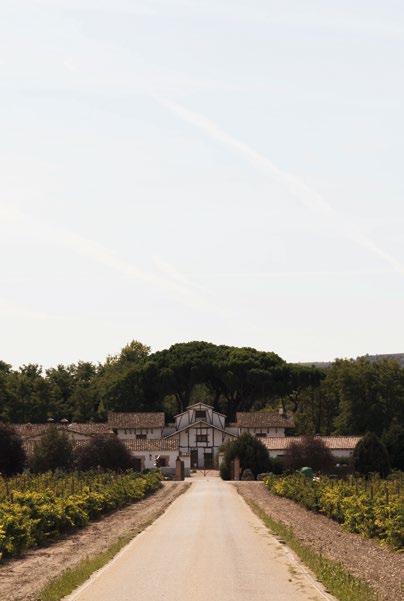
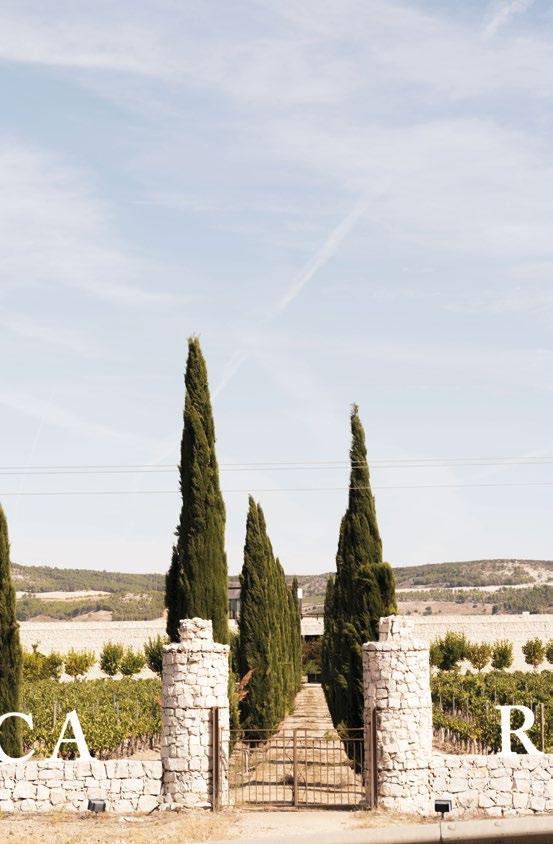




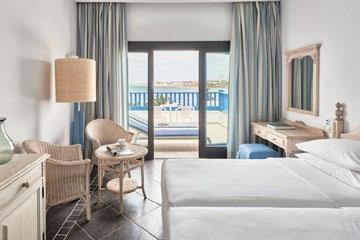



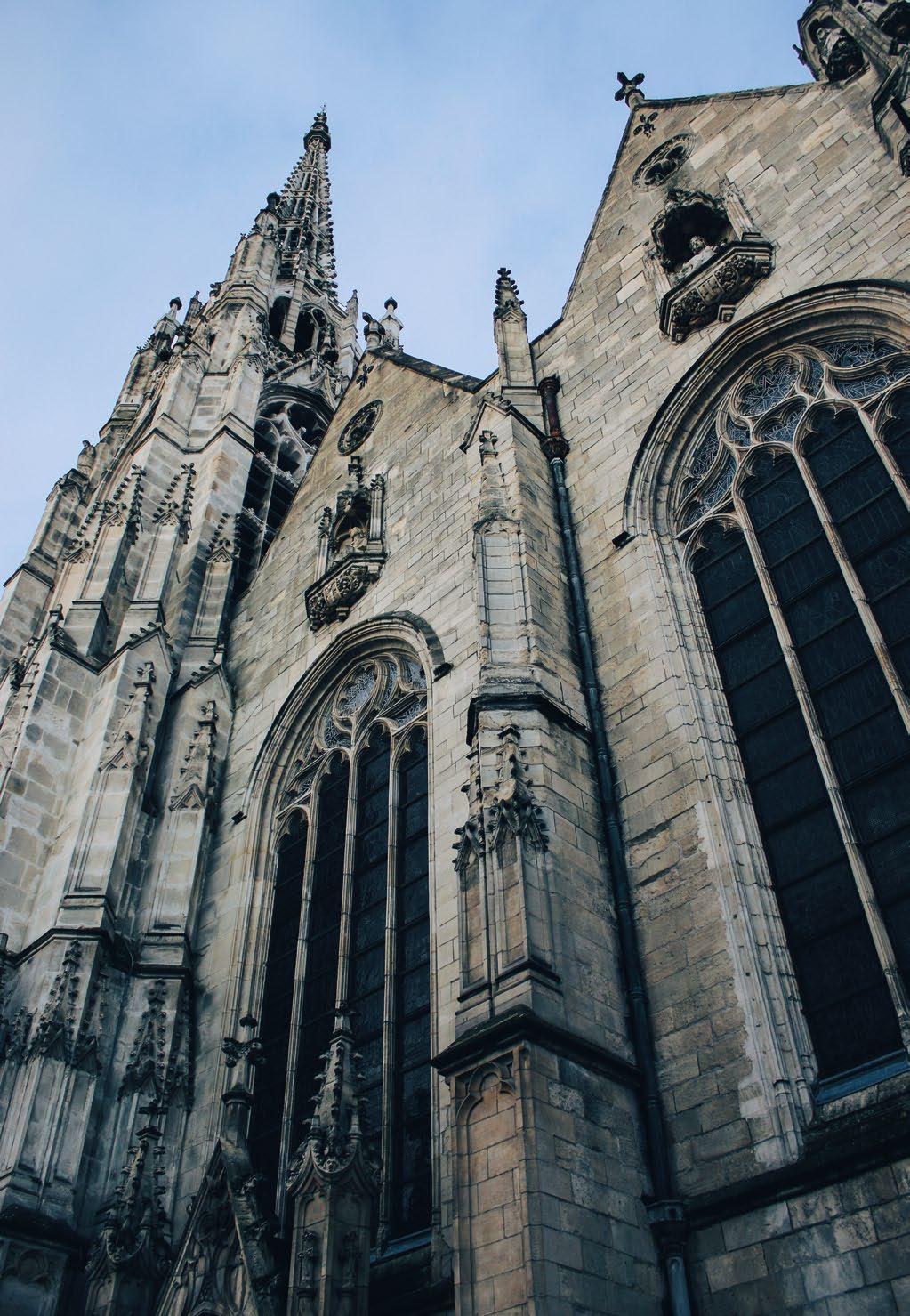 By A. Hernández
By A. Hernández
LILLE, AN UNMISSABLE DESTINATION IN NORTHERN FRANCE
Among the many places in the world that deserve a visit, Lille on France’s northern border is a lovely city featuring many historic buildings, parklands with fortresses in their midst, and a range of iconic buildings and museums that are on a par with Europe’s most famous.

Any visit to Lille necessarily has to include a stop in the Grand’ Place, also known as the Place du Général de Gaulle. Built back in mediaeval times, this was originally known as St Peter’s Square.
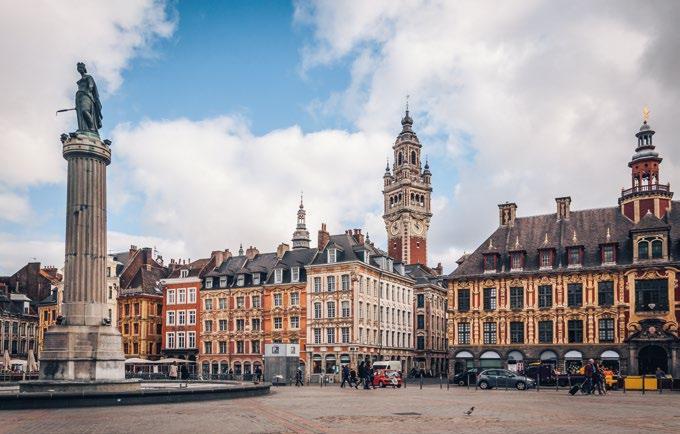
It was the venue for a great deal of economic activity and, indeed, the entire square was a marketplace. Its name was changed to Place du Général de Gaulle following World War II, as soon as Lille was liberated from German occupation.
The square is easy to get to by public transport and is very close to Lille-Flandes train station. A hub of Lille life, this large square is home to numerous restaurants, cafés and bars where you can try the local gastronomy and spend a pleasant day, while also admiring the varied architecture.
Speaking of architecture, a visit to Lille Cathedral, known also as the cathedral of Our Lady of the Treille, is very worthwhile. This neo-Gothic building has a wealth of detail, together with sloping roofs and arches. The gargoyles and stone carvings of saints are among its most distinctive features.
-
circumference of 2.2
-
The Porte de París (Paris Gate) is another iconic landmark in this French city. Designed by Simon Vollant in the
With a total
km, Lille’s Citadel was a city within a city, surrounded by bastions forming a five-point star

17th century, it is an excellent example of classical architecture, with two very different façades for entering and exiting the city. In its upper part you can see the Lille coat of arms with angels and an allegoric statue of “Victory ” ready to lay a crown on the head of Louis XIV.
-
Lille is a city of nature also, a good example being its Citadel designed by architect Sébastien Le Prestre
-
In addition to architecture, Lille offers nature, a good example being its Citadel, which was designed by Sébastien Le Prestre de Vauban to provide protection for the city and its surrounding area. Situat-
ed in the west of the city, it has a fortress and the Bois de Boulogne, which offers approximately 60 hectares of parkland for walks, sport, picnics and taking in nature.
With a total circumference of 2.2 km, Lille’s Citadel was a city within a city, surrounded by bastions forming a fivepoint star. Today it is one of the greenest spaces in the capital of the Hauts-deFrance region.
Needless to say, another must-visit is the Palace of Fine Arts, a city museum with over 700,000 exhibits, including paintings, sculptures, ceramics and sketches. Here you can see works by Raphael, Donatello, Rembrandt, El Greco and Goya, among others. Without doubt, Lille is a destination for fans of nature, architecture and art in general.
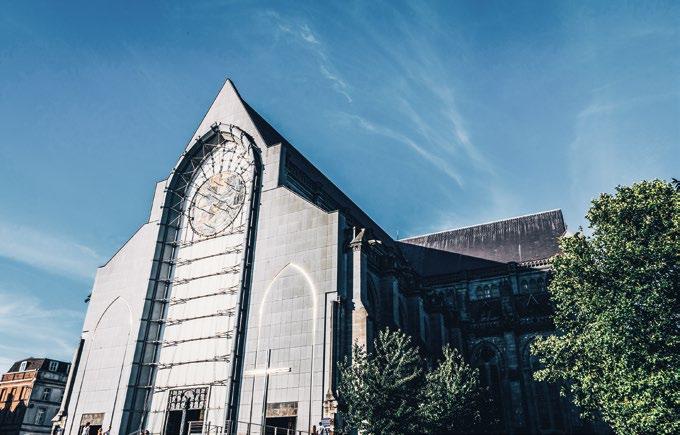





EIGHT ISLANDS TO DISCOVER
The Canaries: eight islands, eight worlds which do not fit on a single postcard. A multi-faceted, enriching, diverse, surprising and stimulating reality … A world full of things to do, all of them accessible, for old and young as well as for families. Take the plunge and rediscover the Islands through original environmental and cultural activities and even community engagement initiatives to care for our land, sea and air.
EL HIERRO


Postcard spots
Sabinosa
Famous for its long-standing folk tradition and the labours of Valentina la de Sabinosa, a key figure in El Hierro folklore and music, Sabinosa is the nearest village to La Dehesa, an area of uninhabited pastureland that is currently used for animal grazing and is home also to the El Sabinar thicket, famous for its gnarled juniper trees bent by the wind. Close to the village is the Mencáfete Natural Reserve, which offers trails to explore the island’s greenery and laurel forests.
LA GOMERA
Historic figure Hautacuperche
Hautacuperche - whose name has been translated variously as ‘he who brings happiness’, ‘born with a lucky star’, ‘the fortunate’ and ‘the lucky one’ - was a native warrior from the 15th century who rose up against and killed the feudal lord of La Gomera, Hernán Peraza.
Hautacuperche.
With Peraza dead, the Hupalupo chief headed the rebellion by the Gomerans in 1488 and led them to the Count’s Tower, where they laid siege to Peraza’s widow Beatriz de Bobadilla and his army. The forces of the Crown of Castile eventually killed Hautacuperche, the leader of the revolt.
LA PALMA Active Hiking

La Palma boasts an extensive network of trails the length and breadth of the island. One of its iconic hikes is in the heart of the Canaries’ first Biosphere Reserve: Los Tilos. This small walk of 6.6 km provides exceptional views from up high over one of the best surviving bastions of laurel forest in the world.
The landscape of the Caldera de Taburiente is also well worth a visit as very few places offer so much biodiversity as this does. The scenery is dominated by pine forest and impressive views can be enjoyed throughout.
TENERIFE Gastro Escaldón de gofio
Escaldón de gofio is an old, traditional dish made by boiling meat or fish broth and adding gofio (roasted cornmeal) in an earthenware bowl, mixing everything together to form a thick paste. Bits of vegetables from stews such as puchero or cocido can also be added, along with sliced red onion and green coriander mojo sauce.
The dish is an ever present on menus in traditional restaurants in Tenerife, called guachinches.

GRAN CANARIA
Canarian traditions Shepherd’s jump
Salto del pastor (shepherd’s jump) is a traditional Canarian technique for negotiating rugged terrain such as ravines, rocks and ridges by vaulting with the aid of a large pole fitted with a metal tip called a ‘regatón’, which cushions the landing. Depending on the island, the pole is called ‘astia’, ‘garrote’ or ‘lata’. There are historical references to its use by the native Guanches during and after the conquest of the Canary Islands by Spain.

One way of vaulting down long distances is called «salto a regatón muerto», used for distances longer than the length of the pole. In this case the jumper does not rest the ‘regatón’ on the ground for support but rather throws it ahead with great skill and accuracy so that it acts as a brake. Some vaulters can leap distances of up to eight metres.
FUERTEVENTURA
Fauna
Fuerteventura goat
Hailing originally from the island after which it is named, this is one of only three Canarian breeds of goat. Its milk is used to make Fuerteventura’s famous ‘majorero’ cheese, which has benefited from Denomination of Origin status since 1996.
These goats are now found on all the islands, although mainly in Fuerteventura, Gran Canaria and Tenerife.
The breed has been exported to countries such as Cape Verde, Venezuela and Senegal, where it has adapted successfully.

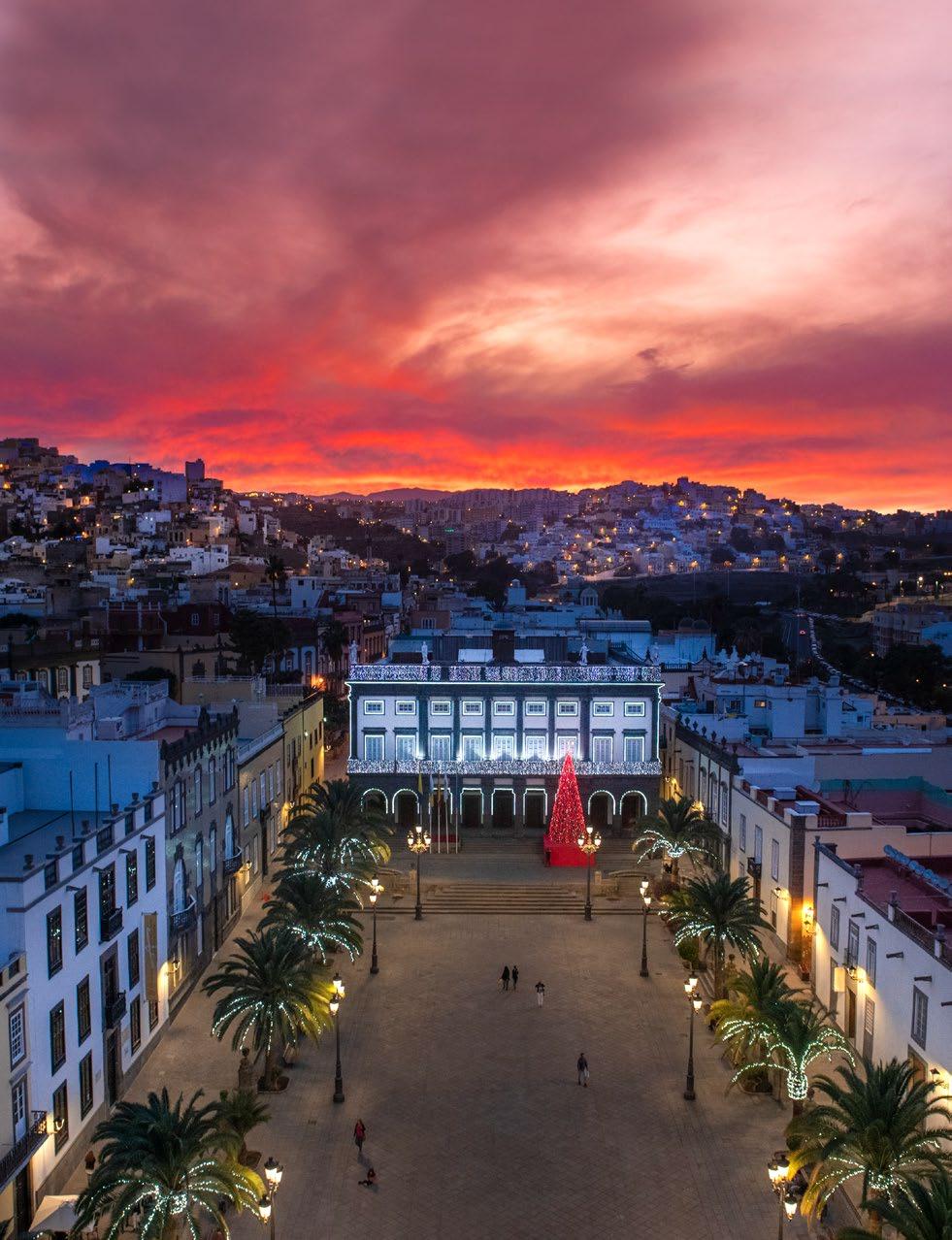
LANZAROTE Swimming Papagayo
A must-visit place when in Lanzarote is Papagayo Beach. Located in the south of the island, this small beach with fine golden sand and generally calm waters is also great for fans of the seabed keen to dive and see the wealth of biodiversity and fauna here.

Other beaches and coves to visit in the area (known as Punta de Papagayo), include Playa Mujeres, Caletón del Cobre, Caletón de San Marcial, Pozo del Rubicón, Playa de la Cruz / del Pozo, Playa de la Cera / Cerita, cala and punta de Papagayo, Playa de Papagayo, Playa Puerto Muelas and Caleta del Congrio.
LA GRACIOSA Culture
Chinijo Museum - La Graciosa
The exhibition rooms in this museum provide information on the Chinijo group of islands and on activities based around salt and the salt flats.
The Del Río salt flats are located in the strait separating La Graciosa and Lanzarote, at the foot of the Famara hills.
One of the museum rooms also houses the skeleton of a large cetacean and gives us a glimpse into the surprising world of sea mammals.
Aloe vera, a plant with beneficial properties grown in the Canaries, has its own exhibition space in the museum.
Admission is free and the opening hours are Monday to Saturday from 10.30 am until 5 pm.
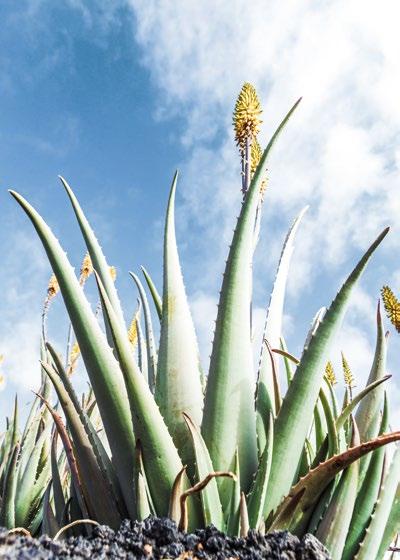

 By Aarón Rodríguez González Photos by Rocío Eslava
By Aarón Rodríguez González Photos by Rocío Eslava
FROM CHIPUDE TO LA DAMA
This month’s walk sees us visit south La Gomera to get to know one of its most special and least-known spots: the Orone protected landscape. We set out from the village square in Chipude, one of the island’s most surprising locations and the starting point of Walk No. 17 on its Trails Network. Our 12.8 km route today takes us along age-old paths which will see us cross steep ravines. La Gomera’s hilly terrain means we will have to contend with almost 800 metres of positive elevation and over 1600 metres of negative elevation along the way, but the effort is truly worth it. La Gomera can be intimidating on account of its hills, but its beauty is stunning.
In the shadow of the Fortaleza de Chipude, the table-top mountain that is one of La Gomera’s iconic geographical features, we head through the small village of Pavón towards the Gollada de Almacla ridge, from where we can see the enormous gorge of the Erque ravine: a deep wrinkle in the island’s rugged skin caused by millions of years of water erosion. Dazzled by the panoramic view of the whole route ahead, we commence the descent towards the upper part of the gorge bottom, the Nogal ravine.
With dry-climate vegetation to keep us company, including palm trees along the ravine bottoms and vestiges of farming terraces that line the most implausible slopes like steps, we head up small ravines and glens towards Erque, one of the loveliest and most unique villages in the south of the island.
With its houses that give the impression of time stood still, this little village is located in a stunning setting with the massive rift of the ravine below and, above, the aforementioned Fortaleza, a giant that gets bigger as we walk further down.
-
We head up small ravines and glens towards Erque, one of the loveliest and most unique villages in the south of the island.
-
From here we commence the walk up to Vega de Taguluche and then down via Lomada de Arguayoda, small areas of fertile land which, in the hilly and rugged south, were vital to subsistence farming, whether for crops or livestock. Proof of this can be seen in the prickly pears and the fruit trees typical of arid parts - figs and almonds, for example - not to mention the ubiquitous palm trees around the small village of Arguayoda. These less hilly parts have allowed more intensive farming of export crops, including bananas and tomatoes. A good example of this can be seen in La Dama, a rural area on the other side of the La Rajita ravine. Our walk ends here, amid banana groves and the white houses on the seashore.


« AT OCEANOCAN WE DON’T SEE CLIENTS AS BEING BIG OR SMALL »
Interview with Eduardo Olmos Bittini, director of Oceanocan Prevención

You have been in charge at Oceanocan Prevención for over 15 years. What qualities does a good leader need today?
They need to be a coach, an inspiration, generate enthusiasm, motivate and help their team; bring the best out of everyone. If you succeed in influencing and motivating your employees, you improve individual and, by extension, collective attitude, which is the driver of success. A good leader needs to be honest, tolerant and, above all, a good listener.
Who does Oceanocan’s cater for: big companies or small sole traders? What sets you apart from others?
We work with all kinds of companies and sectors and our major clients include some that are top names in the Canarian economy in the aviation, hospitality and services sectors. However, we also have thousands of small and medium-sized sole traders, who we treat with the same degree of professionalism day in day out. We don’t see our clients as being big or small: they are clients that entrust their staff’s health and safety to us. Probably the most important aspect that sets us apart is that we can give each one what they need, a bespoke solution.
What kind of services does Oceanocan Prevención provide?
In addition to occupational health and safety and all the required training, we
deliver courses of all kinds particularly in the area of collective agreements in the Construction and Metalworking industries. We are also experts in safety and emergencies (training and simulations). We have a Department that offers advice on public health and food hygiene; in the aviation sector we offer comprehensive medical check-ups and training in aerospace medicine.
Workers (and employers) often do not understand what occupational health and safety is for. What would you say to them?
Workers’ health and safety is crucial. Ultimately, the aim is to prevent accidents and absence due to illness. Such periods of incapacity for work are very costly to employer. If you do not have your full complement of staff, your costs can spiral and the company’s productivity is impacted directly.
In your opinion, what is the most important health and safety issue?
Training is the key element for employees. The better the training, the better the efficiency of the company.
What are Oceanocan’s short and long-term expectations? What challenges lie ahead in the coming months?
To continue growing with our clients and with any new ones that come on board also.
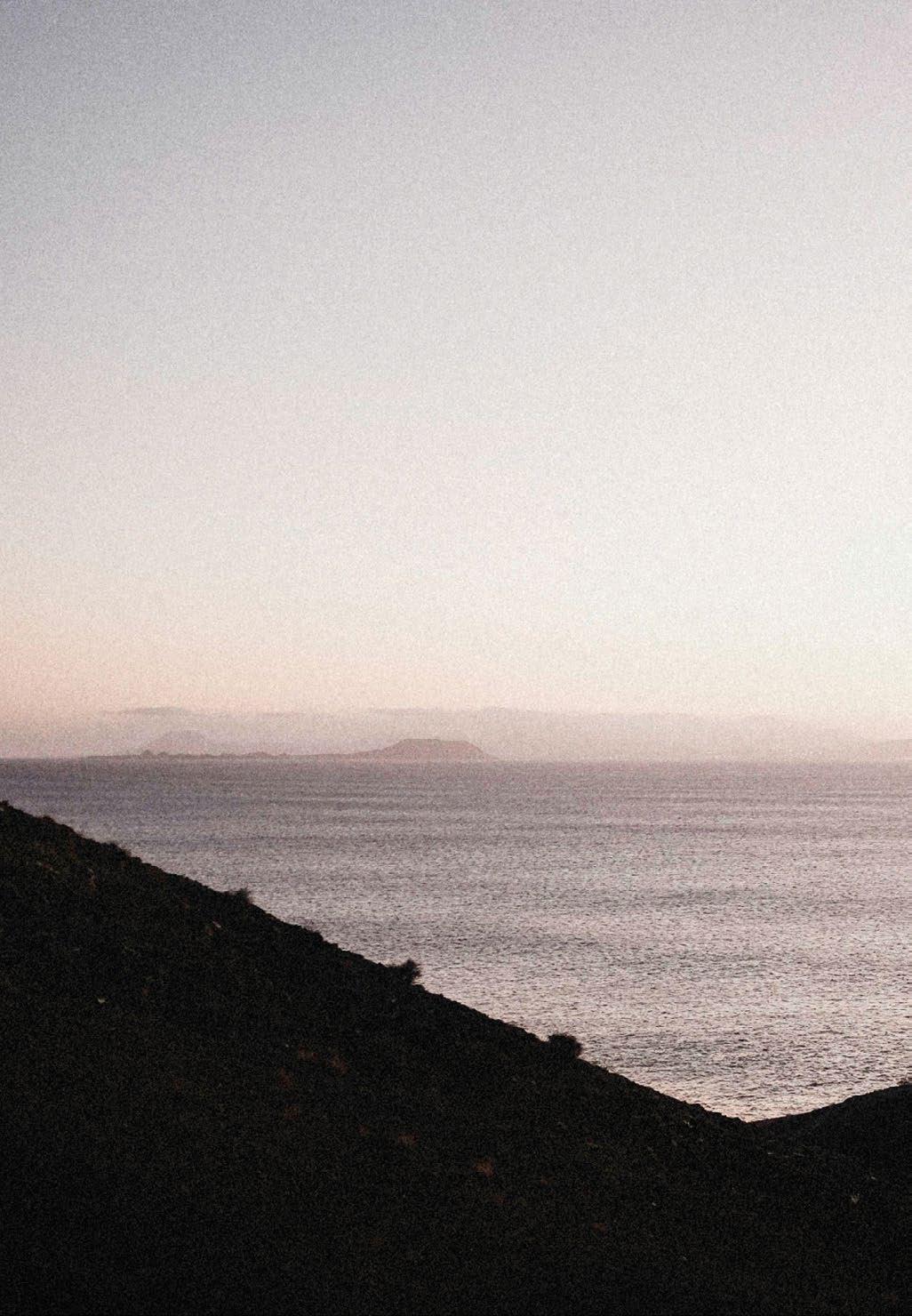
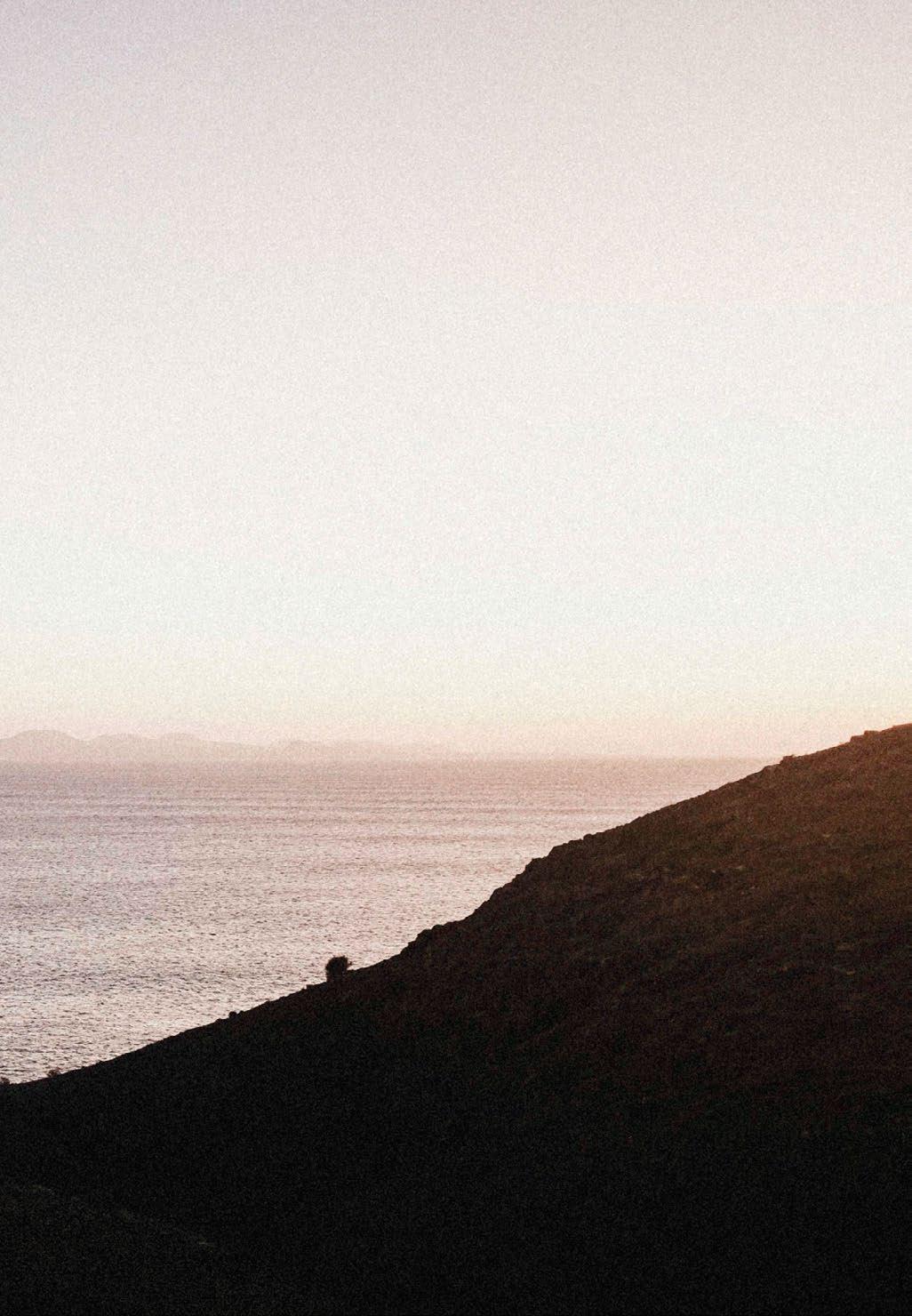
HEALTHY AND WORTHWHILE COMPETITION
Situated close to the famous Papagayo Beach in south Lanzarote and within the Los Ajaches conservation area, the Playa de las Mujeres beach has no reason to be jealous of its better-known neighbour. Perhaps the only thing it might wish to take from it, without the need for unfair or negative competition, is its sheltered bay which adds to its array of mainly blue and green colours.
However, the usually calm sea on this part of the Yaiza coast, the beach’s fine golden sands, its length, ever-present sun, pristine spirit which is ideal for strolls, spectacular location, and the opportunity to get away from it all despite the proximity of the resort of Playa Blanca all make this beach just as attractive as other nearby ones, if not more so.
-
You are privileged if you get to enjoy a full day or a longish stay here, as it is one of the Canary Islands’ top picture postcard spots.
-
To get to this natural monument, you can either set out from Playa Blanca or travel down from the centre of Yaiza, which is linked by road to the rest of the island. At the big roundabout on Avenida A Femés you will see a wide dirt track to the right. Follow this and after a short distance you will come to a toll booth where you will have to pay three euros if you want to access by car and are not a local resident.
From here you head towards the beaches area where there are several parking zones and, for much of

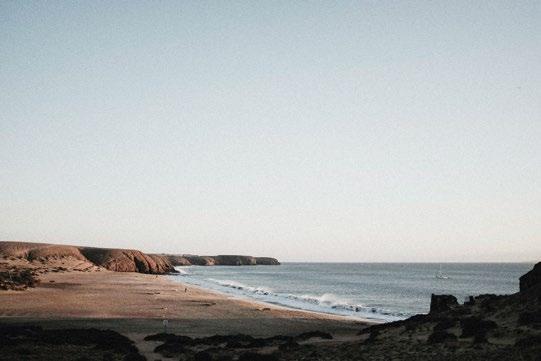
the year, spots also to park caravans, which are regular visitors to these parts. The first of the beaches is Mujeres, although close by also are Caletón San Marcial, Playa del Pozo, Playa de La Cera, the famous Papagayo Beach and, at the far end of the bay, Playa del Congrio.
At around 400 metres in length, Mujeres is the longest of this select group of beaches. As in all the surrounding area, there is very little vegetation although the small bushes can sometimes be used for shade. With its large stretch of golden-white sands, the beach is ideal for sunbathing. However, easily its best feature is the Atlantic, its waters being generally calm and Caribbean-warm in late summer and for most of the autumn.
At low tide you can try and reach the other coves by walking along the shore or by swimming in short stages, taking particular care with the rocky parts. The area has lots of little paths that are ideal for a stroll and for taking pictures with your camera or phone, as well as for enjoying the views, clean air, tranquility and contrasts. The presence of yachts and other pleasure and luxury boats adds to the feeling that you are privileged if you get to enjoy a full day or a longish stay on one of the Canaries’ top picture postcard spots. Have a great time.
Location: South Lanzarote, in the Los Ajaches conservation area and near the famous Papagayo Beach in the municipality of Yaiza.

Lifeguards: in summer. Surfing beach: no.
Restaurant : there is one situated between the two beaches although it is not always open: Bar Casa El Barba and Restaurante El Chiringuito.
Toilets: no. Showers: no.
Sunbeds and umbrellas: no.
Adapted for the disabled : no. Car park : yes. Public transport : taxis. Dogs: yes.
LORO PARQUE TO HOST THE CONFERENCE OF THE WORLD ASSOCIATION OF ZOOS AND AQUARIUMS

Loro Parque hosted the 77th conference of WAZA (World Association of Zoos and Aquariums). The organisation, which has more than 300 members made up of the world’s most progressive zoos and aquariums, organises this event every year with the aim of exchanging knowledge and experiences among experts in the field in order to continue contributing to wildlife conservation.
The event brought together more than 240 participants from 41 countries and regions. Topics such as sustaina -
bility, animal welfare, conservation or strategic planning were discussed.
The WAZA Annual Conference is the highlight of the year for members of the global zoo and aquarium community. A summit that brought to Tenerife the leaders of the most important zoos and aquariums in the world, in order to strengthen the role of zoos and aquariums in the protection of the environment, in a context where the sixth mass extinction threatens the lives of millions of animals.
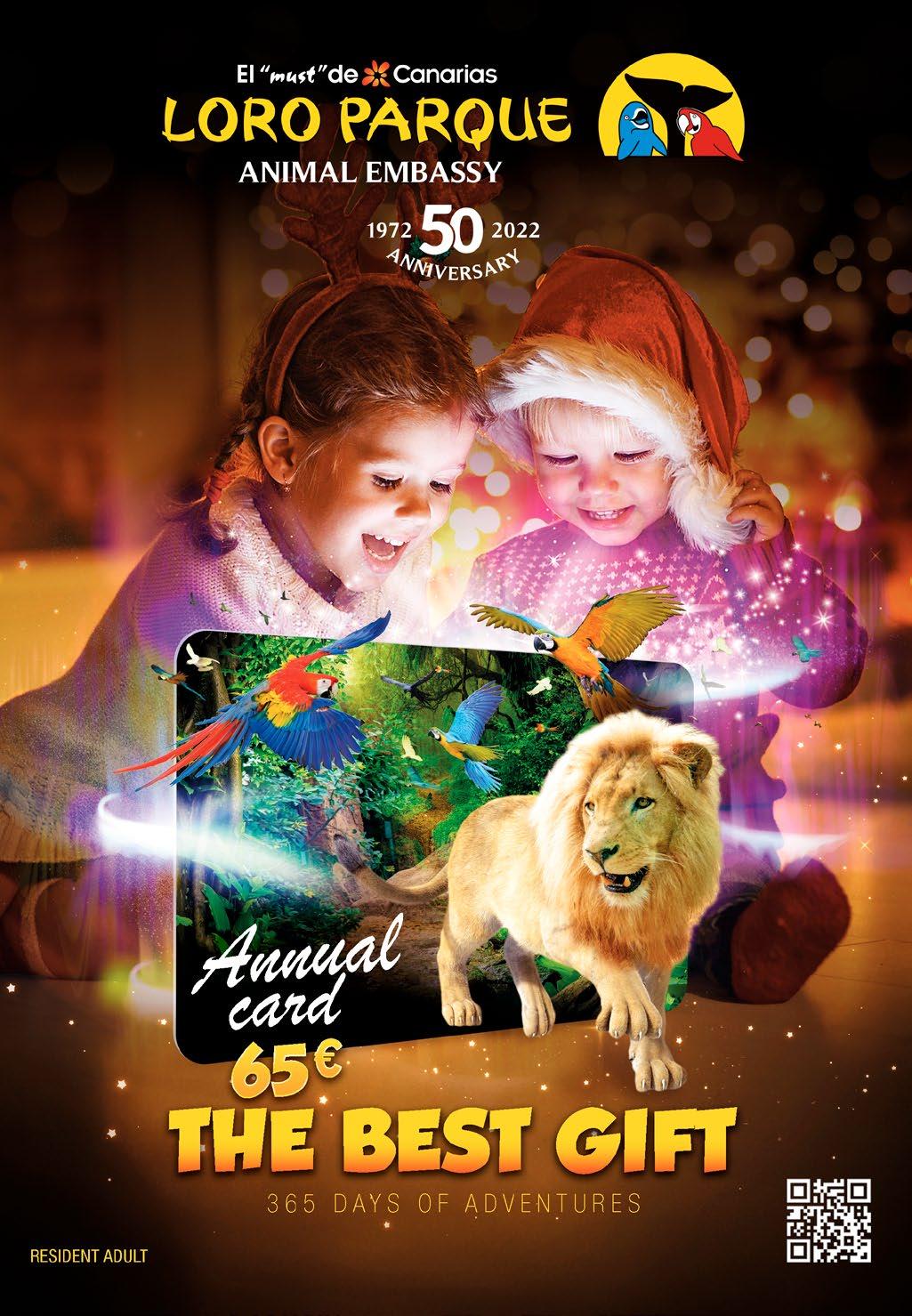
LÍNEAS ROMERO, OVER HALF A CENTURY OF EXPERIENCES
Back in 1930, Jorge M. Toledo created the first maritime mail service, linking Lanzarote and La Graciosa. It was an urgent need for which he spotted an opportunity.
However, if anyone had told him that the company would be one of the most famous in the Canaries today, he probably would not have believed them.
Líneas Romero has firmly established itself as a 100% Canarian and family firm, now in its fourth generation, which connects the islands of La Graciosa, Lanzarote and Fuerteventura by sea.

As a Canarian and family business, it is much more in touch with everyday reality and this led it to set up the Líneas Romero Foundation this year to give visibility to the work it has been carrying out since its beginnings.
OPEN MALL SHOPPING CENTRE IN LANZAROTE

The Open Mall Shopping Centre in Lanzarote, an initiative by local firms Hormiconsa and Supermercados Marcial, opened its doors in Arrecife on 11 November. Managed and marketed by Archigestión, the Mall offers an extensive range of shopping and leisure possibilities in Lanzarote and is open all 365 days of the year. It features prestigious brand names such as Zara, Cortefiel, Women’s Secret, Springfield, Primor,
FundGrube, Worten, Sprinter, Deichmann, Jysk, Koala and - for the first time in the Canaries - Tezenis, Kiabi, JD Sports, not to mention the Sould Park children’s play area, all of which are joined by supermarket giant Hiperdino. Spread over four floors, the new Mall has free parking for 980 vehicles and aims to become a focal point for both residents and tourists, who will find all they need under one roof in modern surroundings.
TEGUISE

LAUNCHES


LANZAROTE’S DEFINITIVE WALK: FROM COAST TO RÍO
From Costa Teguise to Caleta de Famara and culminating in a circular walk on the island of La Graciosa. The route crosses Teguise from east to west, showcasing the municipality’s top environmental and heritage features. As we walk through the central plain and the magical ‘jable’ volcanic sands, we will enjoy diverse
landscapes such as lava fields, volcanic cones, fields of dunes, beaches and villages of particular heritage interest.

We will get to know an area that is a haven for unique birdlife and home to ageold farming practices carried out in the volcanic sands.
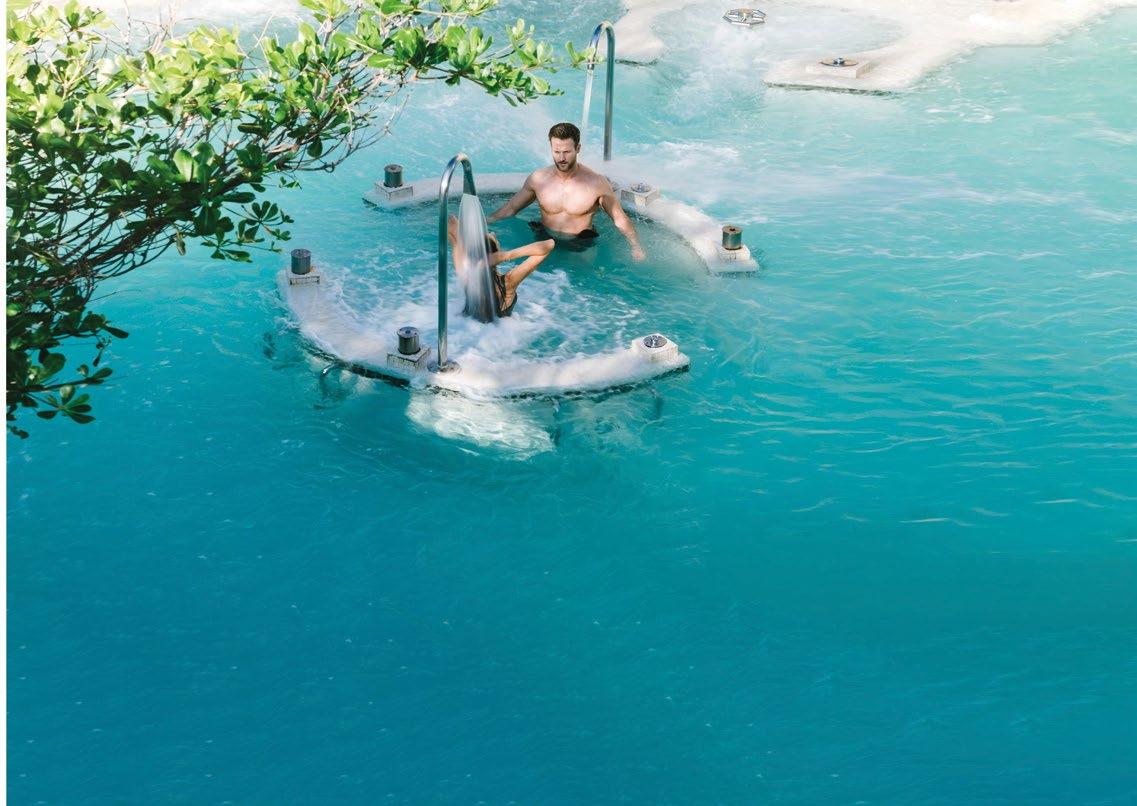
 By Cristina Torres Luzón Illustrated by Ilustre Mario
By Cristina Torres Luzón Illustrated by Ilustre Mario
LEARNING FROM OUR EMOTIONS
Becoming emotional is an innate quality of human beings. Sadly, society has gradually begun to unlearn and switch off its emotions. Knowing how to identify what we feel, why we feel it and what our emotions trigger in us is the first step towards increasing our self-awareness and managing these issues more efficiently.
Emotions are part and parcel of being human. They are present in our everyday lives even if we do our best to ignore them. In humanist psychology they are considered a valuable tool for personal growth as they provide us with valuable information that allows us to understand ourselves better and deal with the conflicts that affect us.
Emotions are part and parcel of being human. They are present in our everyday lives even if we do our best to ignore them. In humanist psychology they are considered a valuable tool for personal growth as they provide us with valuable information that allows us to understand ourselves better and deal with the conflicts that affect us.
Despite their importance, we have become very detached from our feelings and few people have learned to cope with them correctly through a form of learning that begins at an early age and is heavily influenced by how we are brought up. As a result, we often reach adulthood without knowing how to manage our emotions, let alone recognise them.
The first thing to know is that emotions have three elements: physiological, cognitive and behavioural. The physiological element is the involuntary changes in our bodies’ nervous and endocrine system when we experience an emotion: for example, blushing when we are embarrassed or feeling a shiver when something makes us afraid. The physiological response generated by each emotion is the same for everyone.
The cognitive element is how we process that information: the subjective experience associated with the emotion and the impact it has on us. It helps us become aware of the emotion we are experiencing and to give it meaning. The richer our vocabulary, the easier it is for
us to communicate what is happening to us and what are feelings are.
Tools such as reading books and stories, playing games to identify and express emotions, or watching films such as Inside Out help children identify what they are feeling in order to then express this. The process requires guidance from an adult who is familiar with the world of emotions world and helps the child to gradually recognise what they are feeling, what the information is telling them and what they should do with it.
In this way we will build emotional intelligence in the child that will impact on all aspects of their life. -
The first thing to know is that emotions have three elements: physiological, cognitive and behavioural -
For its part, the behavioural element is the external manifestation of the emotion, reflected in changes in behaviour and expression such as non-verbal communication, facial expressions and modifications in the tone of voice. It is conditioned by family and sociocultural learning and regulating it in a healthy manner is indicative of maturity.
For example, very young children experience emotional explosions known as tantrums where they are overwhelmed by emotion and are unable to deal with what is happening to them.
Being on hand to assist through our presence and empathy and not negating or repressing the emotion is the first step in helping the child with their emotional learning.
In the past, messages surrounding rearing children were based on behavioural psychology and included advice to ignore, distract or get angry; however, these three strategies are disastrous for the process. They might have been useful sporadically in preventing the child from externalising such manifestations but, at the same time, they led them to acquire other, counterproductive learnings.
In ignoring them we undermine their self-esteem; they feel unloved and even feel rejected for being as they are. This type of response generates dependent individuals who constantly need external approval to know if they are behaving correctly as they are cut off from their inner feelings because they have been taught that what they felt was neither valid nor respected.
Using distraction as a strategy to quell an emotional storm is another serious mistake. The learning derived from this is the need to come up with another, satisfactory stimulus to avoid the painful feeling. In distracting the child, we prevented them from learning to deal with frustration and in the past this created people who turned to addiction as a response to such emotions.
Lastly, disrespect and bad manners teach our children to interact using inappropriate behaviour and this leads to increasingly violent and unempathetic societies. When we hear of an assault of some kind, we are shocked but do not reflect on what has led people to interact increasingly poorly.
We are now more aware of emotional learning and its repercussions on adult life. We all generate an emotional footprint through the way we bring up children What footprint do you want to create?

GRUPO DENTAZUL
Grupo Dentazul is a Vocational Training Centre accredited by the Canarian Ministry of Education, Universities, Culture and Sport. We offer higher-level vocational qualifications in Dental Hygiene, Dental Prosthesis and Prosthetic Audiology, along with other specialist training courses.

Grupo Dentazul, which is about to celebrate 25 years of course delivery, has received accolades both in Spain and at international level, including the 2019 International Technological and Business Innovation Prize, received at the Museum of Technology in Berlin, and the 2020 SME Socially Responsible Business Award. www.grupodentazul.com
HAEMATOLOGISTS
FROM CANARY ISLANDS’ UNIVERSITY HOSPITAL DISCOVER NEW VARIANT HAEMOGLOBIN

Haematologists from the Canary Islands’ University Hospital (HUC) and their counterparts at the San Carlos Clinical Hospital in Madrid have discovered a new molecule of abnormal or variant haemoglobin in a Tenerife patient. The discovery was reported at the recent Spanish Haematology and Haemotherapy Society congress held in Barcelona and is due to be published in a prestigious haematology journal.
Abnormal haemoglobins are often detected during blood sugar tests in diabetics. High-resolution ion exchange chromatography is used to quantify the high glycosylated haemoglobin (which indicates the average level of blood sugar/glucose) in these patients. This technique separates the components of a solution according to the different types of chemical interactions and is used also to detect haemoglobinopathies.
FACE HARMONISATION SURGERY AT BASCOVIDALES MEDICAL CENTRE
Because not everything can be resolved with aesthetic medicine, at BascoVidales Medical Centre we offer facial plastic surgery treatments.
Ultrasonic rhinoplasty is a procedure used to reshape and/or resize your nose to make it blend better with your face.
Blepharoplasty reduces excess skin and fat in eyelids. It also reduces the sense of tiredness and makes you look younger.
Mentoplasty is used to change the projection of your chin to produce a better fit with the rest of your face.
A facelift rejuvenates the appearance of your face and neck by tightening the skin and muscles.
Procedures that only need local anaesthetic are carried out at our centre. For those requiring general anaesthesia, we use clinics approved by the Canarian


Roboticassisted Surgery for prostate cancer
THEATRE, MUSIC AND ACTIVITIES
TENERIFE FITO & FITIPALDIS
THE BODYGUARD
NEW YEAR’S EVE RACE
Tenerife Auditorium 14 January
After completing their biggest Spanish tour on which they played to massive audiences, Fito & Fitipaldis now take to the stage in a more intimate format to perform songs from their latest album Cada vez cadáver and their classical numbers, interpreted from a different perspective on this occasion. For this tour, Fito Cabrales adds Jorge Arribas and Diego Galaz de Fetén Fetén to his backing Fitipaldis. Together with Carlos Raya, Javier Alzola, Boli Climent and Coki Giménez, they will spend autumn and winter playing in Spain’s top theatres and venues. A unique opportunity to see Fito & Fitipaldis in a very special format.
Martín Tenerife Auditorium
From 4 to 8 January
The Bodyguard is a musical jukebox based on the 1992 film of the same name, with a libretto by Alexander Dinelaris and a repertoire of songs drawn from Whitney Houston’s greatest hits. The show tells the story of a pop star who is forced to hire former Secret Service agent as her professional bodyguard after receiving a series of threats from an anonymous stalker. It premiered in 2012 and has been seen by more than four million people worldwide since then.

La Laguna 31 December
La Laguna’s New Year’s Eve road race is one of the most popular sporting events of its kind in the Canaries. It is run on the last night of the year through the streets of the old part of La Laguna. The race is for all ages and covers a distance of approximately five kilometres. Registration is open until 20 December online at www. deportelagunero.com and in person in the offices of the city’s Sports Department (Organismo Autónomo de Deportes).

LANZAROTE

CANARY ISLANDS’ INTERNATIONAL MUSIC FESTIVAL

Lanzarote and La Graciosa
From 14 January to 3 February
Fans of top-rate classical music have an unmissable date with the prestigious Canary Islands’ International Music Festival, which returns to Lanzarote and La Graciosa in 2023 and brings top soloists and orchestras to both islands. The first Lanzarote concert of this year’s 39th Festival is by the Tenerife Symphony Orchestra, who will perform works such as Mendelssohn’s Symphony No.4 under the baton of Japanese conductor Eiji Oue. For its part, the En Paralelo Festival will end with baroque music by the charismatic group El Afecto Ilustrado, led by Canarian violinist Adrián Linares.
GRAN CANARIA NEW YEAR CONCERT
Alfredo Kraus
Auditorium
28 and 29 December
The Alfredo Kraus Auditorium hosts this ninth edition of the traditional festive New Year Concert by the Las Palmas Symphony Orchestra. The programme features excerpts from well-known lyrical and symphony works, this year with the wonderful voice of Vanessa Goikoetxea and the versatility of a capella group Vocal Siete. The orchestra’s activities in recent years have helped young musicians from Gran Canaria gain important orchestra experience performing under conductors such as Guido Ajmon-Marsan, Patrick Baton, José Brito, José María Damunt and others.
JEREZ DE LA FRONTERA JEREZ FESTIVAL
SANTANDER
PABLO MORENO

Haddock Bar 23 February
From 24 February to 11 March
LAS PALMAS DE GRAN
CANARIA
SAND NATIVITY
The Jerez Festival is held in February and March every year and is devoted to flamenco music. It is followed by the handing out of the Jerez Festival Awards, which are chosen by the public and critics.

Pablo Moreno emerged on the Spanish music scene in 2019 with a new, fresh and well-structured music format. His early compositions have demonstrated his many singer-songwriter talents. The special bonds he forms with the sizeable audiences who turn out for his concerts are also reflected in his songs. He is currently on tour with Todos Fuera, which sees him present his first album in major locations throughout Spain.
NATALIA LACUNZA
Las Canteras Beach From 2 December to 8 January
The Nativity Scene carved out of sand is an ephemeral sculptural ensemble which has been created every year in Las Palmas de Gran Canaria since Christmas 2006 and features eight of the world’s best sand sculptors. The quality of their work and the unique setting of the Las Canteras Beach, with an average temperature of 23ºC year-round, make this one of the world’s most important and original events at Christmas. Year after year, it is the third most visited museum space in Spain in December. www.lpavisit.com.
Sala Escenario Santander 17 February
Natalia Lacunza is a singer-songwriter from Pamplona, Navarra. She took part in Spain’s TV talent show Operación Triunfo in 2018, reaching the final. Since leaving the Academy, Natalia has established herself as one of the leading figures on the Spanish music scene. The Operación Triunfo finalist presents here her first album, Tiene que ser para mí, which was released in June 2022.

FLORENCE
CARNIVAL

CONCERT
Teatro Verdi 21 February
This much-anticipated Carnival Concert by the Orchestra della Toscana with Diego Ceretta and Giuseppe Gibboni presents the sweet-sounding classical music of Tchaikovsky, Fauré, Rachmaninoff and Millhaud in Florences’s beautiful and world-renowned Teatro Verdi.
The theatre hosts a comprehensive programme featuring classical music and theatre seasons, together with rock and pop concerts.
MADEIRA MADEIRA CARNIVAL
TOULOUSE BULLET FOR MY VALENTINE
Inauguration of the exhibition Galdós in the Laybyrinth of Spain, produced by Acción Cultural España (AC/E) and offering an overview of the photography of Pérez Galdós and his era, arising out of his work as a photo-historian. The exhibition presents dozens of portraits of the maestro, most of which are shown for the first time here. For further information, see www.casamuseoperezgaldos.
Le Bikini 21 February
Welsh metalcore band Bullet For My Valentine continue their 2023 European Tour. The band was formed in 1998 under the name Jeff Killed John and started out playing covers of Metallica and Nirvana songs. For this tour they will be joined on stage by some special guests, including Jinjer and Atreyu.

EXHIBITIONS AND FAIRS

GRAN CANARIA GALDÓS IN THE LAYBYRINTH OF SPAIN
Funchal
From 10 February to 5 March
The Madeira Carnival includes a wide choice of activities that allow you to be a mere spectator or an active participant. Carnival season generates a permanently festive atmosphere both at the official events and the more spontaneous celebrations which are deeply-rooted in the island’s traditions. Fun and goodwill reign on the streets, at the various venues and in homes.
Until 23 December
TENERIFE CABILLA
Tenerife Arts Space
Until 8 January
Until 8 January 2023, TEA Tenerife Arts Space hosts Cabilla, a project by Sol Calero with the participation of Ana Alenso, ArchivOlares, Rubén D’hers, tropical papers, Ernesto Paredano, Lucía Pizzani, Armando Rosales and Christian Vinck. The exhibition is based on images of Venezuelan 1960s and 1970s modernity which arose from the oil boom and intensive farming and became a paradigm of Latin America modernity. The mass arrival of Canarian emigrants created not just a transfer in the economic sense but also a transfer of images that created utopias and dystopias between the two territories.
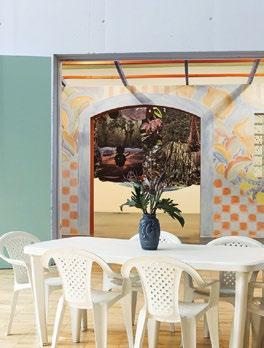
MENORCA KITCHEN OF
CRAFTS
Menorca Artisan Centre

Until April 2023
This exhibition focuses on kitchens as a place where tangible objects of craftmanship tend to be concentrated but also as a space for family gatherings and artisanal practices. The visit begins with an indispensable utensil in Menorca – mortar bowls, a range of which are exhibited from different periods and materials. It continues with information on the evolution of different types of kitchens down the ages.
VALLADOLID
FORESTS AND CLIMATE CHANGE

A CORUÑA PHOTOGRAPHY EXHIBITION: STEVEN MEISEL 1993

Science Museum, Valladolid
Until April 2023
Forests and climate change: an open future is an exhibition produced by the University of Valladolid with the collaboration of the Spanish Foundation for Science and Technology (FECYT)-Ministry of Science and Innovation. The exhibition’s various panels seek to fulfil a twin purpose: firstly, to showcase the opportunities offered by forests, which play a key role in the fight against climate change as important absorbers of CO2 –a greenhouse gas whose atmospheric concentration has increased rapidly–; secondly, to highlight the challenges faced by forests.
Muelle de Batería, A Coruña
Until May 2023
Steven Meisel 1993, a year in photographs brings together the work of this maestro of photography during 1993, a decisive year in a career marked by his close collaboration with Vogue that saw him earn twenty-eight front covers and over a hundred editorials for the magazine. The exhibition features more than one hundred classical portraits of men and women from the worlds of fashion and cinema, including Linda Evangelista, Carla Bruni, Naomi Campbell, Hamish Bowles and Kyle MacLachlan.
 By Francisco Belín Illustrated by Ilustre Mario
By Francisco Belín Illustrated by Ilustre Mario
INSPIRATIONAL FOOD FOR CHRISTMAS GATHERINGS
Renowned chefs from the Canary Islands and a famous pastry chef take part in what has become a long-standing tradition in the December issue of our NT inflight magazine: a menu for Christmas or New Year’s Eve that allows cooking buffs and even those who leave everything to the last minute to shine. The suggestions below bring together fusions of cultures and culinary brilliance. Get those aprons on!
Starter
Ingredients for eight truffles: 200 g of semi-cured goat’s cheese; one tablespoon of roasted maize gofio; 500 g ripe tomatoes; 200 g sugar; one cinnamon stick.
To prepare, cut the tomatoes into quarters and cook on a low flame with the sugar and cinnamon. Break the goat’s cheese into pieces and form truffle shapes with them by squeezing with your fingers, then coat in the powdered gofio. When the jam has reduced, leave to cool and serve with the cheese truffles.
First Course Cartagena Ceviche Pedro Nel Restrepo–Tenerife, Colombia
Ingredients: 300 g of precooked shrimps; one cup of tomato sauce; 50 g of mayonnaise; 2 g of Worcester sauce; 2 g of vegetable oil; a teaspoon of fresh ají. Also: the juice of one lemon; 20 g of finely chopped onion; two teaspoons of finely chopped celery or parsley; half a cup of white wine or brandy; salt to taste.
Preparation: clean the shrimps thoroughly, then rinse and drain them; cook them in boiling water for three minutes until white, then place in water with ice. Put to one side.
Fuerteventura goat’s cheese truffles with maize gofio and tomato jam Yareli Pérez–Fuerteventura
Mix the other ingredients well in a separate bowl. Taste for salt, ají and lemon and add the shrimps; mix together and cool for at least 30 minutes. Serve in a glass accompanied by plantain chips.
Second Course
Bacon Ramen Nikkei Adrián Bosch and Eduardo Domínguez de León–TenerifeIngredients for four people: 1 kilo of chicken carcass; 1 kg of beef bones; 600 g of pig’s trotters. For the sauce: 200 g of soy sauce; 300 g of mirim; 20 g of ginger; 10 g of kombu seaweed; 20 g of dry shitake mushrooms. These ingredients can be found in Asian food shops, but similar ones may be used if required.
Add: fresh mushrooms; four organic eggs; 200 g of bacon (best if from black pig); a sprig of spring onion and one of coriander. For the ají panca sauce you will need 5 g of ají panca red pepper; 2 cloves of garlic; vinegar to taste; a pinch of cumin; a drop of oil; two packs of sommen noodles.
To prepare the soup: place ingredients in a tray and oven roast at 200ºC until golden. Remove and place in a pot with enough water to cover and cook slowly for three hours. Add the bacon after two hours. Strain the soup and taste for salt.
For the sauce, mix all the ingredients and cook on stove at moderate temperature, without boiling. After 10 minutes, strain and set aside. Boil the eggs for five minutes, then take them out and place in water with ice. Add the eggs to the sauce after an hour.
For the noodles, boil in water for two minutes. Remove and set aside. Add a little oil to prevent noodles from stick-
ing. For the ají panca sauce: shred the ají panca (if not available, use La Palma peppers) and blend with the garlic, cumin, vinegar and oil until a paste is formed.
Take a large bowl and cover the bottom with the sauce and then place noodles on top. Add the bacon (lightly fry the skin side in a frying pan beforehand to brown), egg halves, chopped spring onion, raw mushroom and coriander, then pour the ají panca sauce over. Finally, add the soup to the bowl.
Dessert
White chocolate and red berry semi-chilled mousse Kibi Lugo–Gran Canaria
Choose suitable moulds. For the mousse: 200 g of whipping cream; 100 g of water; 150 g of sugar; 200 g of red berry puree; 90 g of egg whites; 80 g of white chocolate. Make the juice with sugar and water; beat the egg whites until firm. Once this is done, add the warm juice and continue beating to obtain an Italian meringue.
In a separate bowl, heat the red berries and add to the chocolate, mix well and allow to cool. Whip the cream until nearly firm, add the chocolate stirring thoroughly and add the meringue. Place in mould and leave to cool.
Before this, make the filling - cream of red berries - with 100 g of milk; 20 g of butter; sugar; red fruits. Caramelise the sugar in the frying pan; add the milk and cook while adding the red fruits and butter. Strain.
Raspberry gel: a few strips of gelatine; 500 g of red berries. Boil, add the gelatine and cook for around three minutes. Allow to cool and then blend.


LA VACA AZUL
El Cotillo in Fuerteventura is an ideal spot for campers and should be underlined in red in any decent travel notebook if the aim is to spend a few hours trying wonderful sea food. Of the wide range of places available to eat, one stands out by tradition for its quality ingredients and friendly service.
La Vaca Azul is one of the top restaurants not just in Fuerteventura but also in the entire Canary Islands. Set in a stunning location looking out over the Atlantic and the old harbour at El Cotillo, here you will enjoy excellent fresh fish and seafood dishes, along with an extensive selection of soups, salads, meats, rice dishes and home-made desserts.

Requena, 9. El Cotillo - Fuerteventura. T. 928 538 685.
ICIA HIGHLIGHTS POTENTIAL OF CANARIAN CHICKEN, GOAT AND KID GOAT IN GOURMET

CUISINE
The Canarian Institute for Agricultural Research (ICIA) presented seven papers on the subject of the Islands’ gastronomy and local produce at the 23rd Ibero-American Symposium on the Conservation and Use of Zoogenetic Resources.
Two of the papers discussed Canarian chicken, goat and kid goat and were entitled, respectively, Notes on traditional Canarian cooking using Canarian chicken and Notes on the possible use of matured carcasses of chicken and kid goat with local genotypes in gourmet cooking.
The first study emphasised the importance of revisiting traditional Canarian recipes in which local chicken is the main ingredient, while the second advocated the differentiation of products with local genotypes (goat and poultry) as elements in innovative cooking.
SÜREST, THE NEW CANARIAN GIN

Five years after it first came up with the initial idea, Bernardo’s Mermeladas brings to the market a gin which is distilled in Lanzarote and is one of very few made entirely in the Canary Islands.
As is traditional at Bernardo’s, the maceration process features a predominance of Canarian aromas and botanicals, with prickly pear present alongside the classical juniper berries and citruses.
A carefully prepared maceration prior to distillation for over twelve hours in a copper still produces a classic London Dry Gin with excellent balance and hints of Canarian botanicals. These hints are apparent in the tertiary notes, where the prickly pears emerge very subtly.
The gin is bottled in the classical manner and the subtlety and elegance of its taste are clearly evident.
T. 928 833 441 info@bernardos.org
LANZAROTE’S
FINCA
DE UGA CHEESE ONE OF THE WORLD’S TOP 100
The Oveja Bodega cheese by cheesemaker Finca de Uga (Lanzarote) has again been selected as one of the best on the planet following its «Super Gold » rating by expert tasters at the prestigious World Cheese Awards which were held in Wales (UK) on 2 November.
Along with seventeen cheeses from Spain and just one other from the Canaries, it has been included in the top 100 in the world.
Ever since Finca de Uga picked up its first international award in 2009, the Lanzarote maker’s cheeses have carved a place for themselves among the island’s most highly prized artisanal products.
According to the farm’s head, Arminda García, «our Bodega Oveja is a very special pressed pasta cheese made with milk from 100% native Canarian sheep, which have survived thanks to the labours of farms in the Canaries such as Finca de Uga».

BINTER IMPROVES FLIGHTS FROM THE CANARIES TO A CORUÑA TO FACILITATE SHORT WINTER BREAK

Binter has made improvements to the operating days and times of some of its flight connections this winter to facilitate short trips and weekend breaks, which are in high demand at this time of year.
In the case of A Coruña, the airline’s flights from Gran Canaria (LPA) will continue three times a week, although from November they operate on Wednesdays, Fridays and Sundays.
On Wednesdays, the flight departs from Gran Canaria at 15:20, arriving in A Coruña at 19:10. The Friday flight departs at 08:15 and lands in the Galician city at 12:05, while the Sunday departure is at 15:05, arriving at 18:55.
The return from A Coruña departs on Wednesdays at 19:50, Fridays at 12:45 and Sundays at 19:35.
Passenger-centred service
Passengers on these services will benefit from the advantages of Binter’s differentiated product and high-quality inflight service which aims to provide them with the best possible experience, including a complimentary gourmet snack and the on-board comfort of our modern Embraer aircraft. An added advantage is the opportunity to fly free of charge to/from any airport in the Canary Islands as the inter-island leg is offered at no extra cost for connections using one of the many daily flights operated by the airline between the islands.
BINTER LAUNCHES NEW CHAIR IN CORPORATIVE COMMUNICATION, INTERNATIONALISATION AND AERONAUTICS AT THE
UNIVERSIDAD
DEL ATÁNTICO MEDIO
Collaboration between Binter and the Universidad del Atlántico Medio has led to the creation of the Binter Chair in Corporate Communication, Internationalisation and Aeronautics, a new initiative aimed at bringing the business and university worlds closer together to foster research and offer comprehensive training for communications professionals of the future, thus helping them face the challenges posed by the realities of the labour market.
The Binter Chair will be associated directly with the degree programmes offered by the Faculty of Communication: Film, Communication, Events Organisation and Protocol, and the Higher University Qualification in Videogame Design.
The first action undertaken under the collaboration formalised in October between the airline and the Universidad del Atlántico Medio is the creation of the Final-Year Project Prize to reward aca-
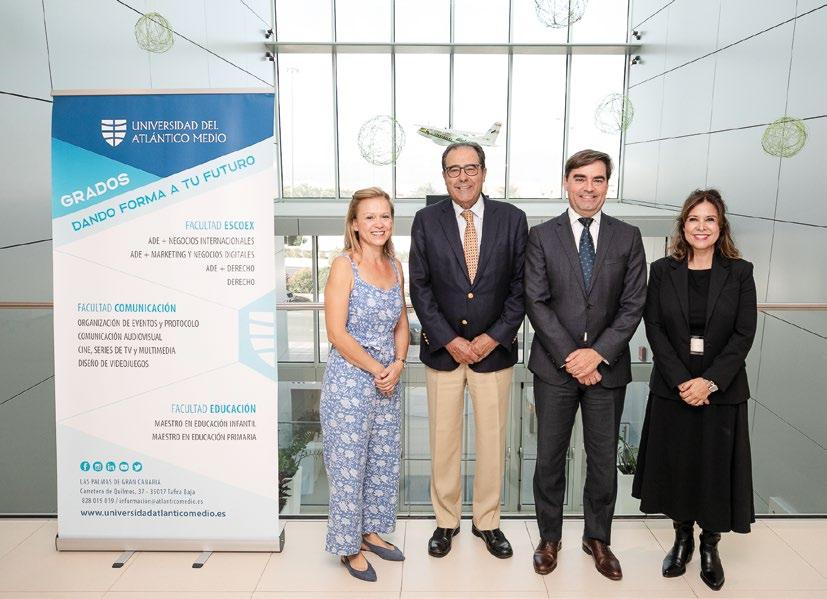
demic excellence and the contribution to knowledge by students, who will receive not just a diploma but free flights for two people and a cash prize.
Other actions envisaged by the Binter Chair include the preparation and publication of research articles and work, the organisation of training and information activities such as seminars and courses, and a photography competition focused on destinations in the Canary Islands.
FLIGHTS TO SPANISH AND INTERNATIONAL DESTINATIONS FROM 24.35
EUROS WITH BINTER’S ‘FLIGHT FRIDAY’
November saw Binter launch its new Flight Friday promotion, with very low fares for travel between the Canaries and the airline’s twelve destinations in the rest of Spain from 11 January until 31 March 2023.

From 14 to 28 November, flights between the Canaries and Vigo, A Coruña, Asturias, Santander, Vitoria-Gasteiz, San Sebastián, Pamplona, Zaragoza, Valladolid, Murcia, Jerez de la Frontera and Mallorca were available for just 24.35 euros each way. Also included in the special offer were the airline’s direct flights to six European destinations in Italy, France and Portugal (Lille, Toulouse, Venice, Turin, Florence and Madeira) and one in West Africa (Marrakech).
In addition, thanks to Flight Friday, all passengers who purchased a ticket at any fare for travel to destinations in
mainland Spain and the Balearic Islands, Italy (Turin, Florence and Venice), France (Lille and Toulouse), Marrakesh and Madeira will be entered in a draw for one hundred return flights to any Binter destination for one person, to be taken between 1 January and 30 June 2023. The draw will take place in front of a notary during December.
BinterMás cardholders also benefited from exclusive Flight Friday offers, with 50 % off the number of points needed for flights to the Spanish mainland, Balearic Islands, Italy and France and 25 % off in the case of Marrakesh and Madeira flights.





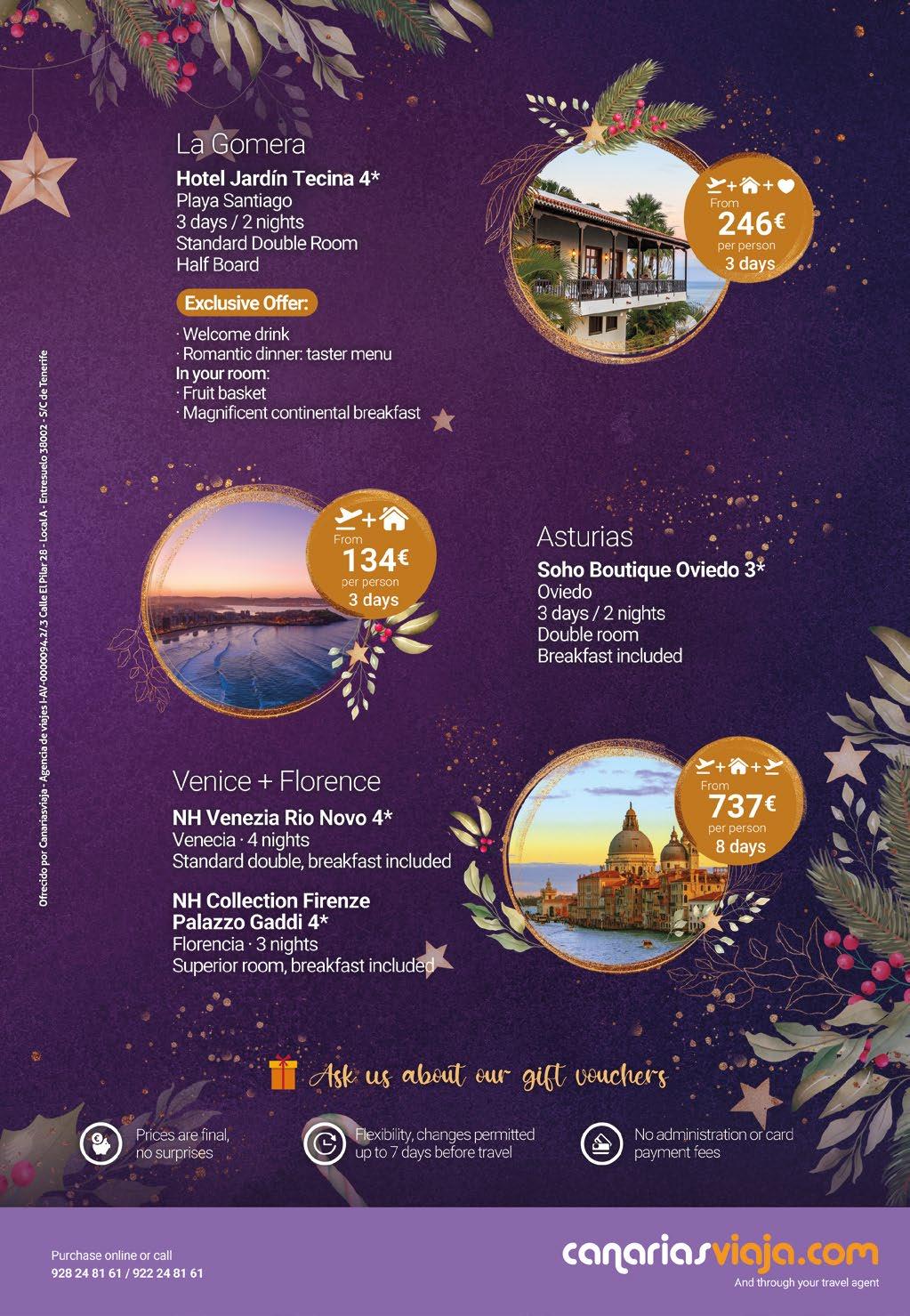
Complementary gourmet snack on domestic and international ights

GOURMET SNACKS FOR KIDS


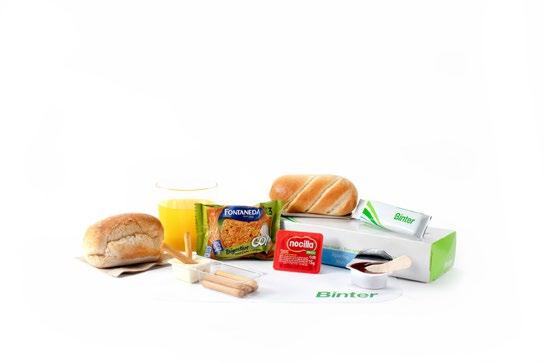
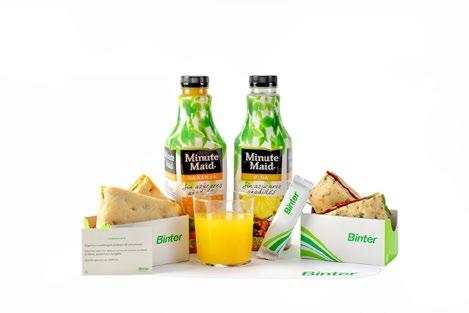
GOURMET SNACK
GOURMET SNACK
GOURMET BREAKFAST
GOURMET SNACK

unique moments


Use your BinterMás card this Christmas and enjoy the best possible experiences.



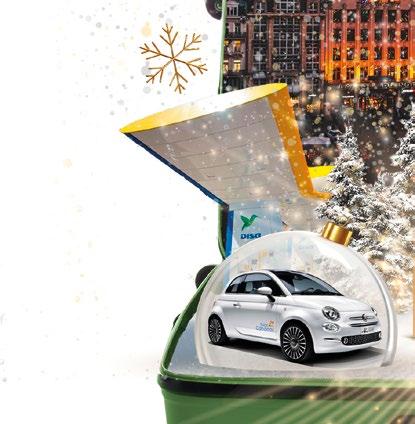

Take advantage of our partner rms’ special offers: hotels, shopping, SPA, golf... and turn great moments into unforgettable memories.

Visit bintermas.com and discover the full range of offers for earning and redeeming your points this Christmas.











Merry Christmas and a Happy New Year!
EARN x2 + EXCLUSIVE BENEFIT



